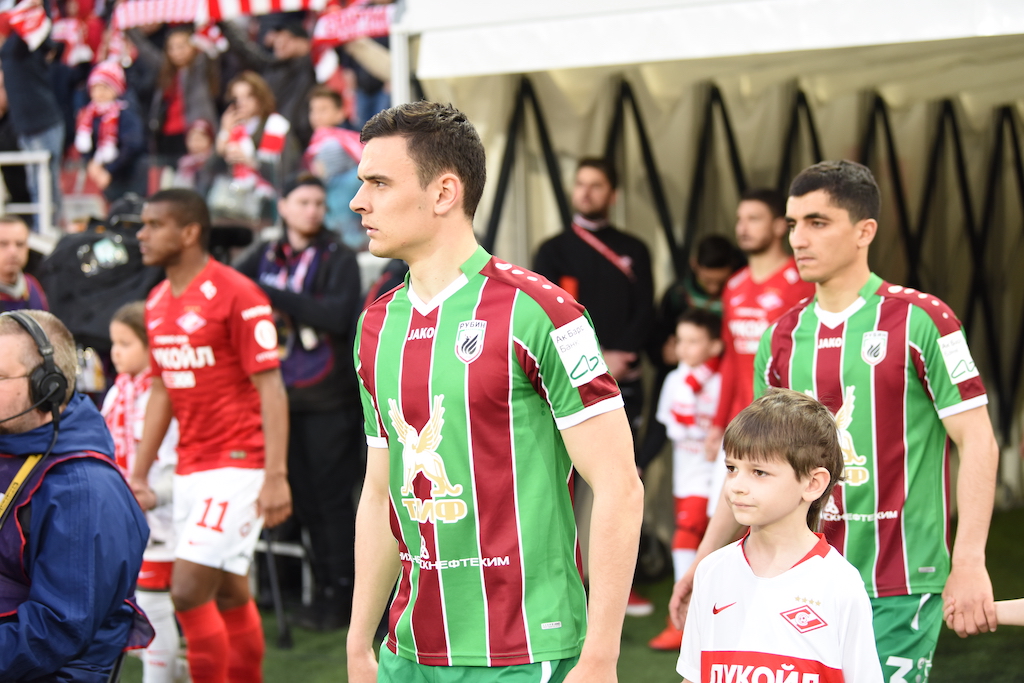Museum of Becarac, Pleternica, Celebrates Slavonia Folk Song
November 7, 2020 – Protected by UNESCO, the unmistakable Slavonian folk song style will get deserved attention at the new Museum of Becarac in Pleternica.
There are lots of pretty little towns in Slavonia like Pleternica. The average outsider often has no way of distinguishing between them. But, Pleternica is determined to stand out. In a smart and considered move, they've decided to become synonymous with a UNESCO-protected element of Slavonian and Croatian culture - Bećarac.
Last year, Bećarac Square was opened in Pleternica. Soon, the town will become home to another symbol of heritage preservation – the Museum of Becarac. The Museum of Becarac will be located right next to Bećarac Square in the center of the town.
Bećarac is a traditional and humorous type of folk song originally from Slavonia. It has an unmistakable sound. It is characterised by a rhyming, call-and-response type of delivery and is performed acapella or accompanied by the traditional Slavonian folk music style of tamburitza. The melody of Bećaraci remains constant, only the song words differ as it continues or is again performed. In this way, Bećarac is more akin to the traditional storytelling aspect of folk music than it is an individual song.
The first verse is sung by the choir leader and forms a logical thesis; it is repeated by the choir of gathered men. The second verse is a humorous antithesis, also repeated by the choir (but often broken by laughter). Bećarci is usually performed at the peak of a party as a drinking song after the crowd is sufficiently warmed up by wine and music. A series of bećarci can last indefinitely. Their words are often made up spontaneously. The creator of the lines of lyrics can draw on many different sources of inspiration - recent happenings, local stories, reputations, past songs and much more. The style is embraced by almost every band who you will ever hear play tamburitza music - young, old, traditional, or modern. Thus, the subject matter and language used can vary greatly, as does the appeal of the humour and the lyrics. If a writer creates a popular motif, it can be remembered, repeated and even replied to at later instances. It may travel outside of its source of origin in the same way traditional folk music always has.
Bećarac was declared an intangible part of cultural heritage by UNESCO in 2011. The name bećarac comes from the word bećar, meaning reveller, and the word is often used to describe young Slavonian bachelors.
Museum of Becarac to present Slavonian heritage in a modern way
As Požeški vodič reports, the Museum of Becarac project was presented at the beginning of 2020. The 1400 square meters that the Museum of Becarac will occupy has already been designated during the construction of Bećarac Square.
Below the stands of the square, it is planned to house a souvenir shop and a cafe. The Museum of Becarac itself will be built on two floors. The first is already visible when you walk through the passage under the stands. The larger part of the museum will be located underground, in the basement space. The museum is expected to open at the end of 2021.
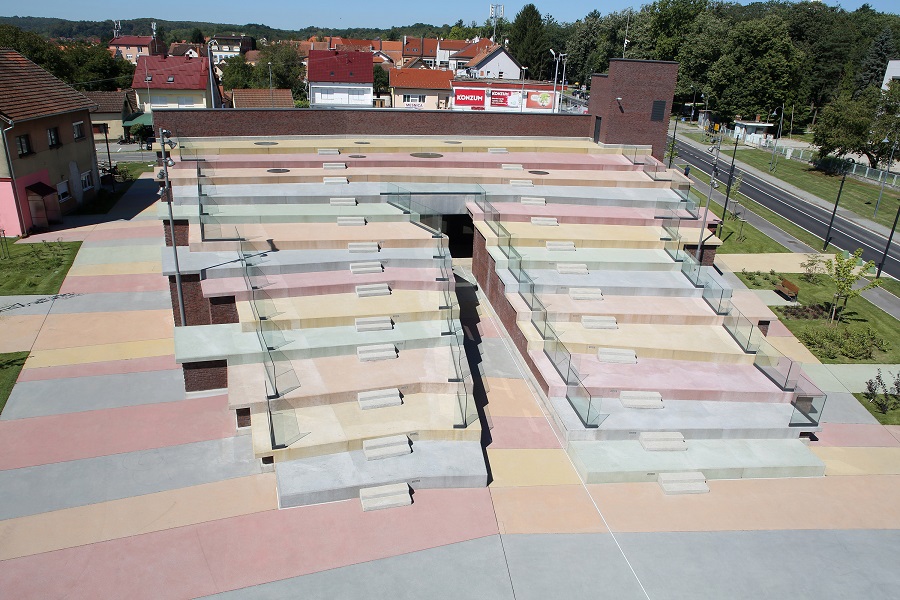
Bećarac Square in the center of Pleternica, under whose stands the Museum of Bećarac will be located, is designed as a reminiscence of golden Slavonian fields and sunny hills / D. Fabijanić, The City of Pleternica
"The Museum of Bećarac will be a presentation of heritage with all modern techniques: music, video, and visual recordings, and at some point, you will even have the feeling that you are running through wheat fields," said Antonija Jozić, the Mayor of Pleternica.
Apart from Slavonia, the Croatian regions of Baranja and Srijem are also home to bećarac, and it belongs to them equally. Furthermore, it is also performed in parts of southern Hungary and Vojvodina. It is a part of traditional culture throughout much of the Pannonian Basin. Like its UNESCO protection, its continued performances seek to preserve a special Slavonian tradition. This dedicated museum will also contribute to doing just that.
"Folk costumes and other objects will be exhibited in the museum, too, because it is very important, but we will use other methods to contextualize these objects. First of all, this is not a museum of folk costumes, but a museum of folk song bećarac. And it is performed. So we have to figure out how bećarac will be in focus all the time, but then we will, of course, talk about other anthropological, ethnographic, and historical phenomena related to bećarac," explained Dragana Lucija Ratković Aydemir, founder and director of Muza company which participated in the presentation of the museum project on January 13, 2020.
The Museum of Bećarac is part of a large project called "Svijet graševine" (The world of graševina), which is being carried out by the City of Pakrac, with the City of Pleternica as one of the partners. Out of the total 65.7 million kuna of the project, 30 million kuna is intended for the Museum of Bećarac, while the rest is intended for the City of Pakrac's "Spahijski podrum" project and branding.
The rich city cultural treasury
The Museum of Bećarac is designed as an extension of the tourist offer of the small Slavonian town. Pleternica has about 11,000 inhabitants, but every year, one event attracts as many as 100,000 pilgrims there. It is the Novena of Our Lady of Tears, whose sanctuary is located in the heart of Pleternica and for which the city of Pleternica is otherwise known. It is held every year from 23 to 31 August.
The June Days of Amateur Creativity called LIDAS are also important for Pleternica, during which the splendor of the cultural treasury of this region is presented. The children's tamburitza festival "Cvjetići glazbe" (Flowers of Music) is held on those days and is the only one of its kind in Croatia. Due to the parish church of Sv. Nicholas, who is the patron saint of the city, Pleternica City Day is celebrated each year on December 6th.
Pleternica has been looking for a "trigger" for a long time to help them attract even more tourists, and they finally recognized it in bećarac.
"Many years ago, at the suggestion of one of my fellow citizens, we protected the name of the Museum of Bećarac at the Intellectual Property Office because we felt that it could be a good story that would bring tourists to Pleternica. As European funds were available to us, we developed the project and, now we are in the phase of completing equipping the museum. I believe that from the end of next year we will be able to count the tourists who will come to Pleternica," the mayor Jozić told Večernji list.
An interpretation center rather than a museum
The museum currently produces all video and audio materials, applications, art installations, and procures all exhibits, and to consistently convey the spirit of Slavonian tradition to visitors, preparations by museologists, experts, and ethnologists are indispensable.
"The museum we are working on is not a classic museum, it is more of an interpretation center, that is, a visitor center. We will show all tourists who come what bećarac is and what Slavonian life is. And then, of course, when they visit the museum, we hope that they will visit all our other beauties, from wine roads and cellars to family farms," says Antonija Jozić.
The Country's Biggest Export... Croatian Chocolate!?!
November 4, 2020 - Olive groves and vineyards are iconic elements of the vista on the Croatian coast. They appear frequently, as does the international recognition for the wine and olive oil they produce. This makes it all the more surprising to learn that the country's biggest export is, in fact, Croatian chocolate.
On 4 November 2020, 24 Sata reported the surprising statistics about Croatian chocolate. Their sources are agricultural and food product reports from 2018 and 2019, made by the Croatian Chamber of Commerce. They state that Croatian chocolate and cocoa products were at the top of the export rankings. Croatia wine and Croatia olive oil didn't even get a look-in the top five Croatian exports – the next biggest were corn, tobacco products and then fresh and frozen fish.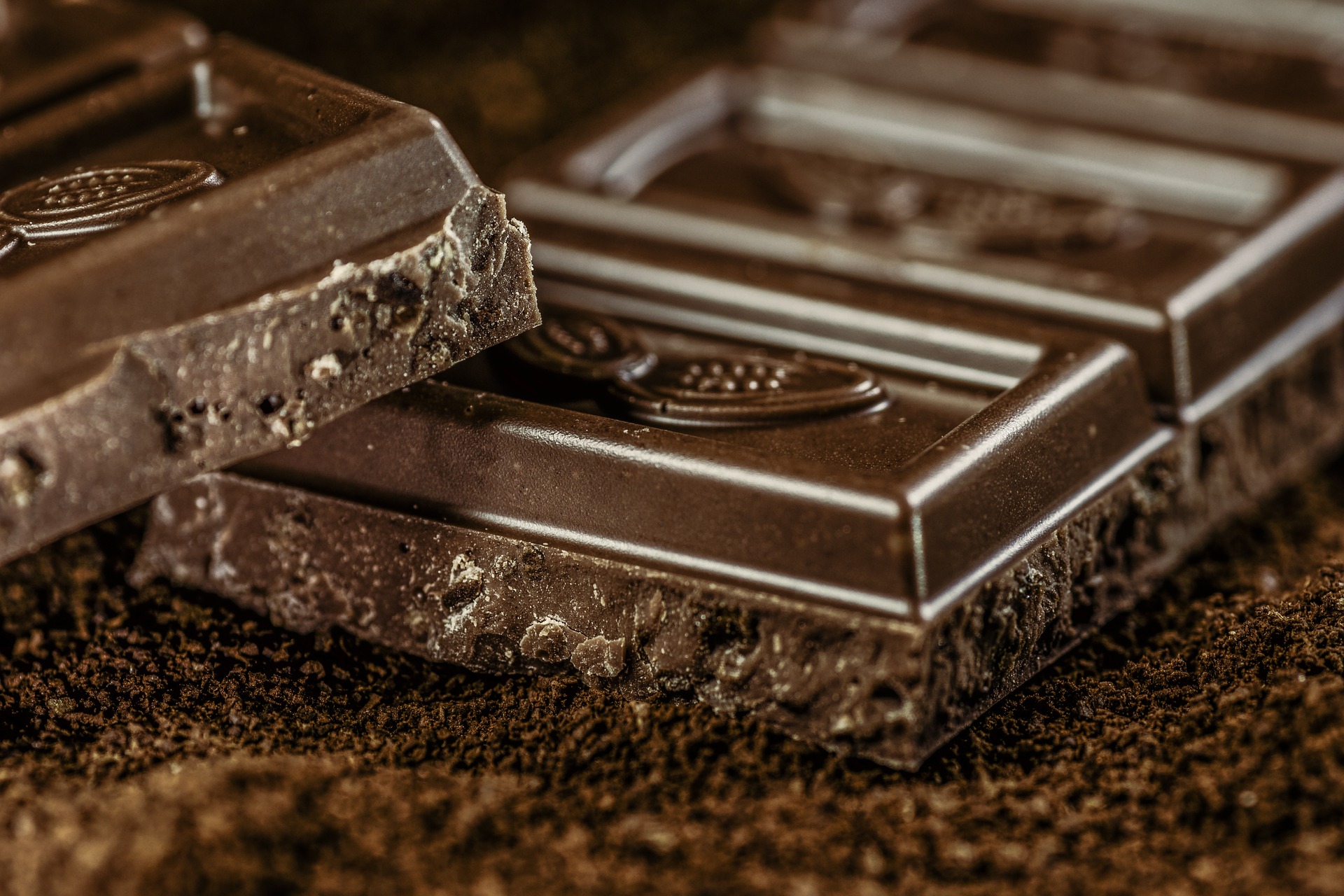 © Alexander Stein
© Alexander Stein
The production of wine and olive oil in Croatia goes back many thousands of years. The industry for making Croatian chocolate is a baby in comparison – Europeans only encountered cacao beans in the 16th century, while exploring and colonising the Americas. Still, the production of Croatian chocolate does have quite a history.
Bajadera by Zagreb's Kraš is one of the most popular boxes of Croatian chocolate to be given as a gift © Kraš
The oldest maker of Croatian chocolate is Zagreb's Kraš. The company's roots lie in three confectioners from the early 20th century. Union is the oldest chocolate manufacturer in south-east Europe (just two years after its foundation in 1911 was awarded the title of supplier to the royal court in Vienna and Budapest), Karolina, a former flour mill which switched to making biscuits and waffles in 1921 and Bizjak, founded in 1923, which made cookies and wafers. These companies, along with a number of smaller Zagreb confectionery manufacturers were merged in 1950 under the name of Kraš, in honor of Josip Kraš, a Croatian union leader and anti-fascist who was killed in World War II. Their range today includes the bars Dorina and Animal Kingdom, boxed classic Bajadera, chocolate biscuits Domaćica and the wafer bars Napolitanke and Tortica. Kandit's classic Rum bar, made in Osijek. Hands-down the best ultra-cheap Croatian chocolate mini-snack bar © Kandit
Kandit's classic Rum bar, made in Osijek. Hands-down the best ultra-cheap Croatian chocolate mini-snack bar © Kandit
The second oldest company making Croatian chocolate is Kandit, which is today still based in Osijek where its parent company was established way back in 1905 as a sugar production outfit. It switched to making waffles, sweets and chocolates in the early 1920s. Its range today includes the kids' favourite Choco Banana and hands-down the best ultra-cheap Croatian chocolate mini-snack bar Rum. It's a classic. Keeping on-trend, the relatively recent No Guilt series of high-quality, no-sugar chocolate bars has made a great addition to Kandit's offer. This range is the only Croatian chocolate currently recommended by the country's diabetic association.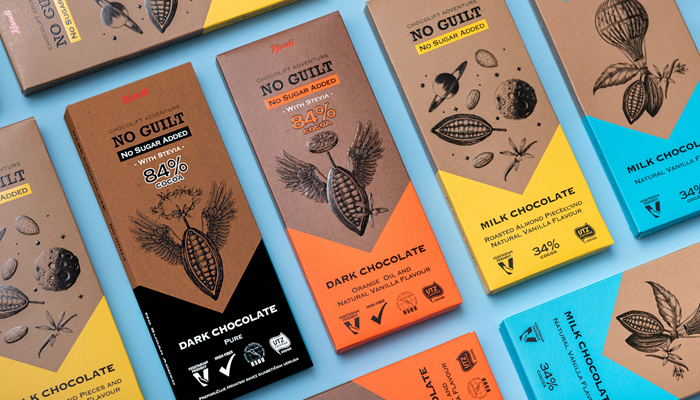 Kandit's No Guilt range has no added sugar and several bars with a high cacao content © Kandit
Kandit's No Guilt range has no added sugar and several bars with a high cacao content © Kandit
The third big player in the Croatian chocolate scene is Zvečevo, from Požega. The company traces its roots back to 1921, but its association with chocolate only really began in 1934 when Swiss company Nestle began to manufacture there (the association continued until 1995). Zvečevo is notable as having invented the combination of toasted rice and milk chocolate in a bar. Now considered a classics pairing across the world, it was first produced in 1964 in Požega under the name of the Mikado bar. As well as still making this classic of Croatian chocolate, Zvečevo now makes a dark chocolate version, chocolate for use in home cooking and a popular range of strong alcoholic drinks. It has won several awards for its ethical and eco-friendly business practices. Zvečevo's Mikado range. With Mikado, the Požega-based manufacturers were the first in the world to combine rice and chocolate © Zvečevo
Zvečevo's Mikado range. With Mikado, the Požega-based manufacturers were the first in the world to combine rice and chocolate © Zvečevo
Standard Croatian chocolate available on the high street can be a surprise to visitors. It has a higher content of the cheaper ingredient (sugar) than the more expensive ingredient (cacao) than many chocolates made in more westerly European countries. But, that's the way Croatians seem to like their chocolate. Well, most of them. According to a survey conducted in 2017 by the Hendal agency and JaTRGOVAC magazine, 63.5% of asked Croatians said they choose domestic chocolate products above the 36.5% who more often buy foreign chocolate products. © Nawal Escape
© Nawal Escape
Data from the Central Bureau of Statistics state that in 2018 the country produced 18,799 tons of Croatian chocolate and cocoa products. Over 800 million kuna's worth of Croatian chocolate was exported in the same year. The bond between Croats and their Croatian chocolate is strong, the love heartfelt. It is no doubt this affection for confection that has prompted some of the third of Croats who go in search of foreign alternatives, for the introduction of premium chocolate ranges by the aforementioned big manufacturers of Croatian chocolate and for the rapid increase in artisan and handmade Croatian chocolatiers over recent years.
Croatian chocolate smaller and artisan producers
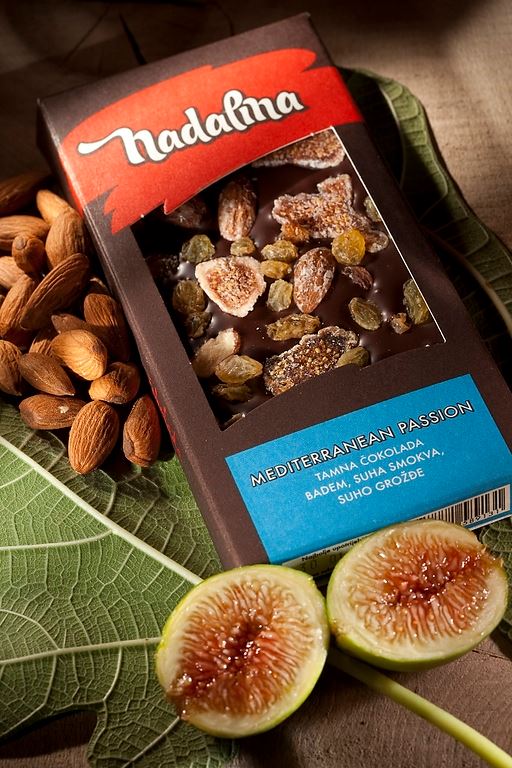
Split-based Nadalina have become increasingly recognised over recent years © Nadalina
Split-based Nadalina make high-quality raw chocolate bars with non-standard flavours like rosemary, figs and olive oil. They held the Guinness World Record for making the world’s largest chocolate bar and in 2017 were voted the world's third-best at the International Chocolate Awards. Vilma slastice from the island of Rab combine dark chocolate with flavours like Pag cheese, white truffles and lavender. Salt manufacturers Solana Nin have a salt-infused chocolate and Zagreb's Chozen make impossibly-pretty handmade Croatian chocolate pralines with a surprising and adventurous range of flavours. Besides these, the list of small manufacturers of Croatian chocolate grows every year. It seems that the love affair between Croats and their chocolate is far from finished, and that's certainly good news for Croatian exports.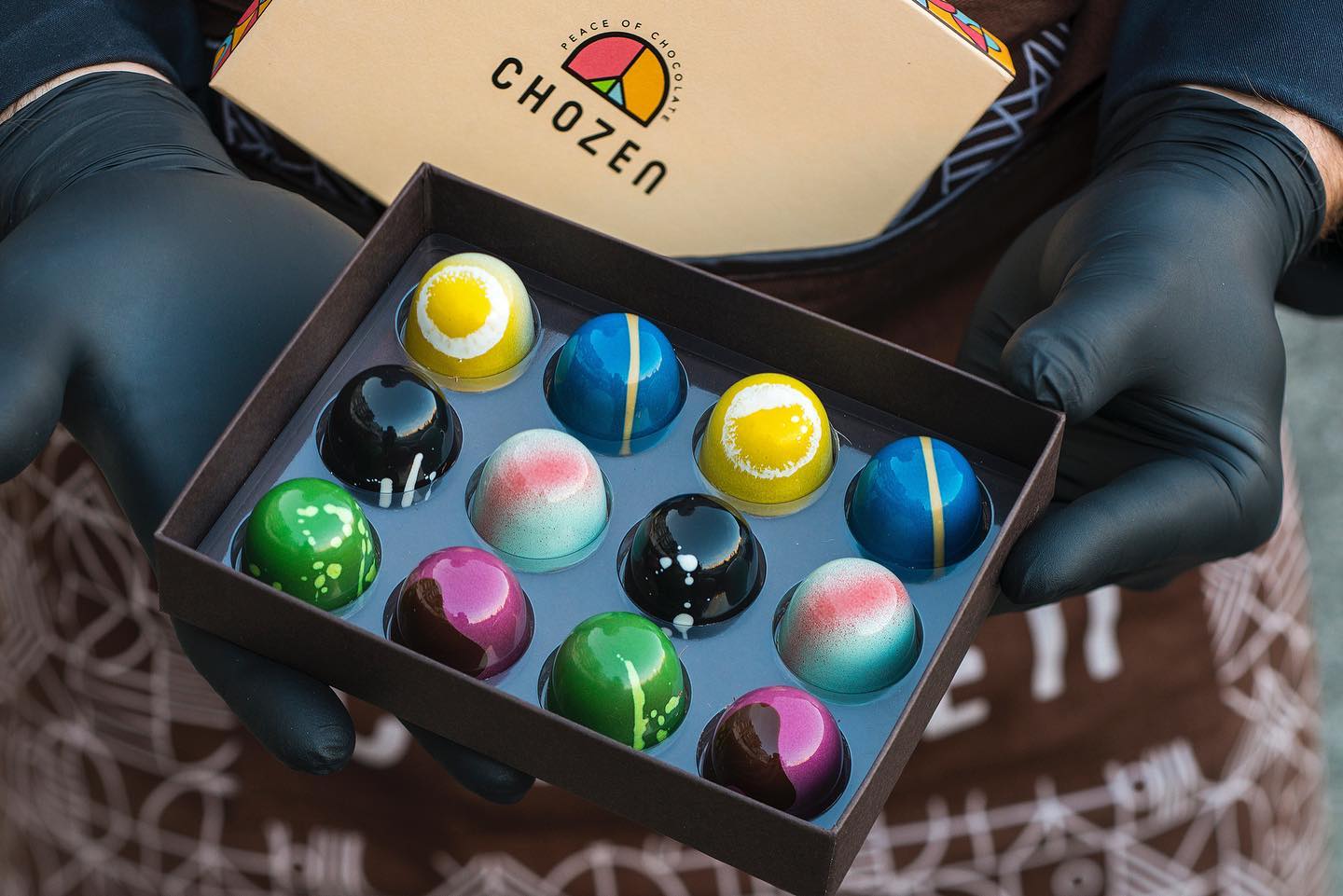 Impossibly pretty handmade chocolate truffles, produced in Zagreb by Chozen © Chozen
Impossibly pretty handmade chocolate truffles, produced in Zagreb by Chozen © Chozen
For the latest travel info, bookmark our main travel info article, which is updated daily.
Read the Croatian Travel Update in your language - now available in 24 languages
Aurea Fest in Požega Ends: From Tamburica Players to Jazzers
Požega, September 3, 2020 – The lights of the Aurea Fest are off. The central square of Požega said goodbye to the guests of this three-day traditional music event, which is held every year at the end of August. The last evening was intended for jazz fans who were entertained by the best Croatian amateur jazz orchestra – Big Band Požega with guests.
Dino Jelusić, Bruna Oberan and the Big Band at the Aurea Fest in Požega / Copyright Slobodan Kadić
The Aurea Jazz Fest was opened by Damir Kukuruzović Django Group, and for the end, good vibes were spread by the Dino Dvornik Tribute Band. At the „Zlatne žice Slavonije“ festival (Golden Strings of Slavonia), the longest-running tamburica festival held the day before, 21 new tamburica compositions were presented.
Damir Kukuruzović Django Group at the Aurea Fest in Požega / Copyright Slobodan Kadić
Along with the doyens of this traditional Slavonian musical expression, we also met some new names, and everything went according to the conditions adapted to epidemiological measures.
Ana Baketarić, Slavonske lole, Ćiro Gašparac, Viktorija Kulišić Đenka, and others performed, and the festival was broadcast live by the Croatian Television and Croatian Radio, followed by fireworks and the special program by Šima Jovanovac – Šimunovo, which marked 55 years of his career.
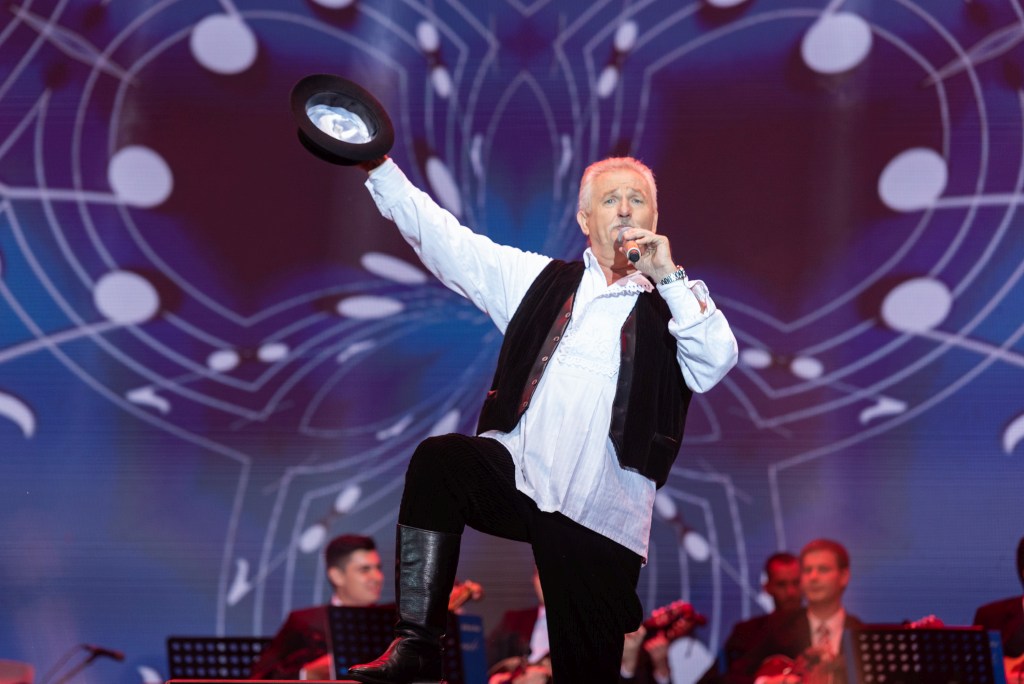
Šima Jovanovac at the Aurea Fest in Požega / Copyright Slobodan Kadić
Numerous folklore societies from all five Slavonian counties presented the cultural heritage of Slavonia, and the festival was opened by the mayor of Požega and Member of the Croatian Parliament Darko Puljašić.
"Thank you for preserving this beautiful Slavonian tradition, nurturing the customs for the youth ahead of us. I hope that we will enjoy these three days in the most beautiful square in the most beautiful city, among the best people," said Puljašić.
Ivana Bošnjak from the "Seljačka sloga" folklore society from Gradište took the title for the most glamorous Slavonian woman („Šokica“) this year. The first runner-up was Nikolina Jugović from "Cernik" folklore society, while the second runner-up was Dijana Klarić from the "Šijaci" Biškupci folklore society.
The competition for the most glamurous Slavonian woman at the Aurea Fest in Požega / Copyright Slobodan Kadić
The citizens of Požega can be satisfied with the offer. The program was followed by the terraces of the surrounding restaurants, and many even danced. See you next year!
For the latest travel info, bookmark our main travel info article, which is updated daily.
Read the Croatian Travel Update in your language - now available in 24 languages
One Thousand Bottles of Wine to be Filled for Aurea Fest Pozega!
August 25, 2020 - Aurea Fest, which will be held in Pozega from August 28 to 30, 2020 with strict epidemiological measures, is a traditional event held in the Kutjevo cellar.
Eight hundred bottles of premium Graševina Kutjevo and 200 bottles of red wine Maximo Nero from last year's harvest will be filled for the occasion. Dino Galić, a member of the Management Board of Kutjevo d.d., reminded of 2019 when the Požega festival successfully celebrated its fiftieth birthday, and Kutjevo achieved a record year with over five million liters sold in the domestic and foreign markets.
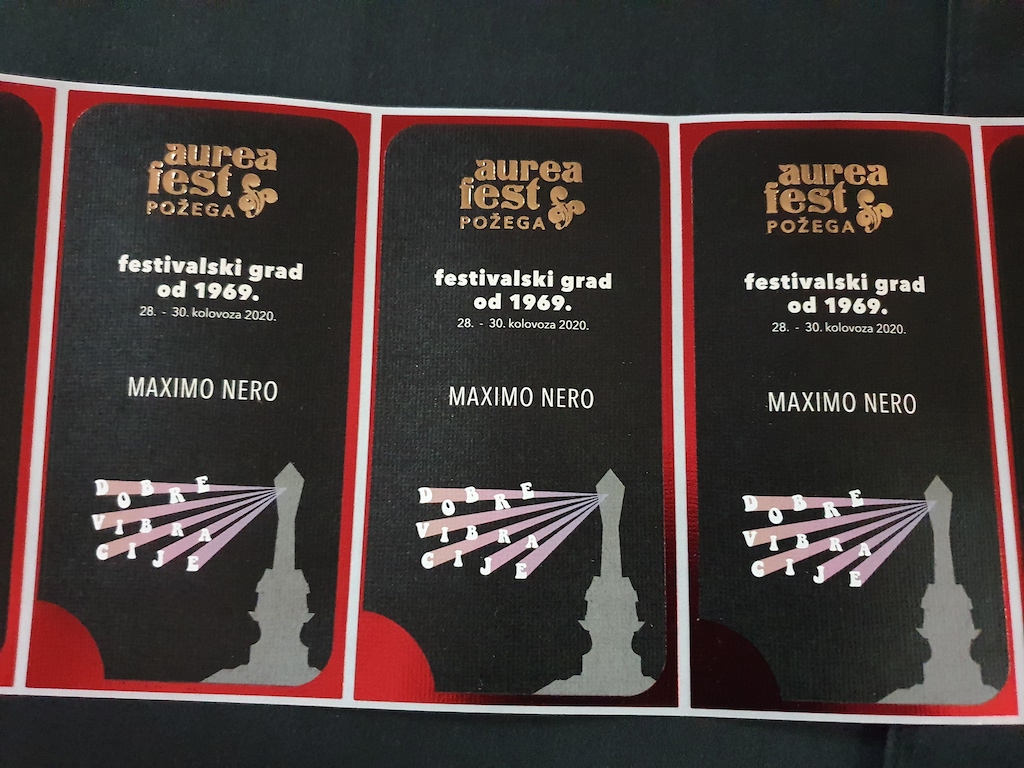
"The spirit of the winery and the festival will not stop, we remain partners and with this wine filling, we will start Aurea Fest Požega," Galić pointed out.
The City of Požega is the sponsor of the festival and Darko Puljašić, Mayor of Požega and Member of Parliament, thanked Kutjevo for their partnership.
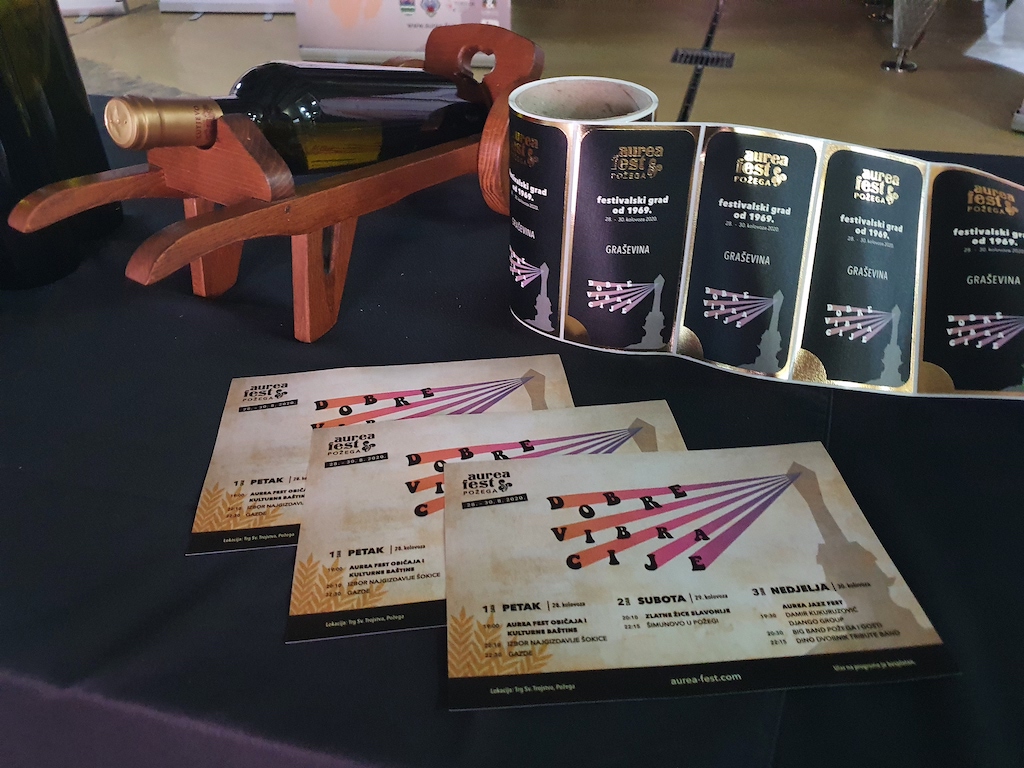
"We perform and fight together. We in Slavonia have always been brave and struggled with adversity. At the festival, we will show the Slavonian soul, and with it comes a good refreshment - Kutjevo wines, which the whole world knows. Let's stay positive in spirit, and negative in coronavirus," said Puljašić.
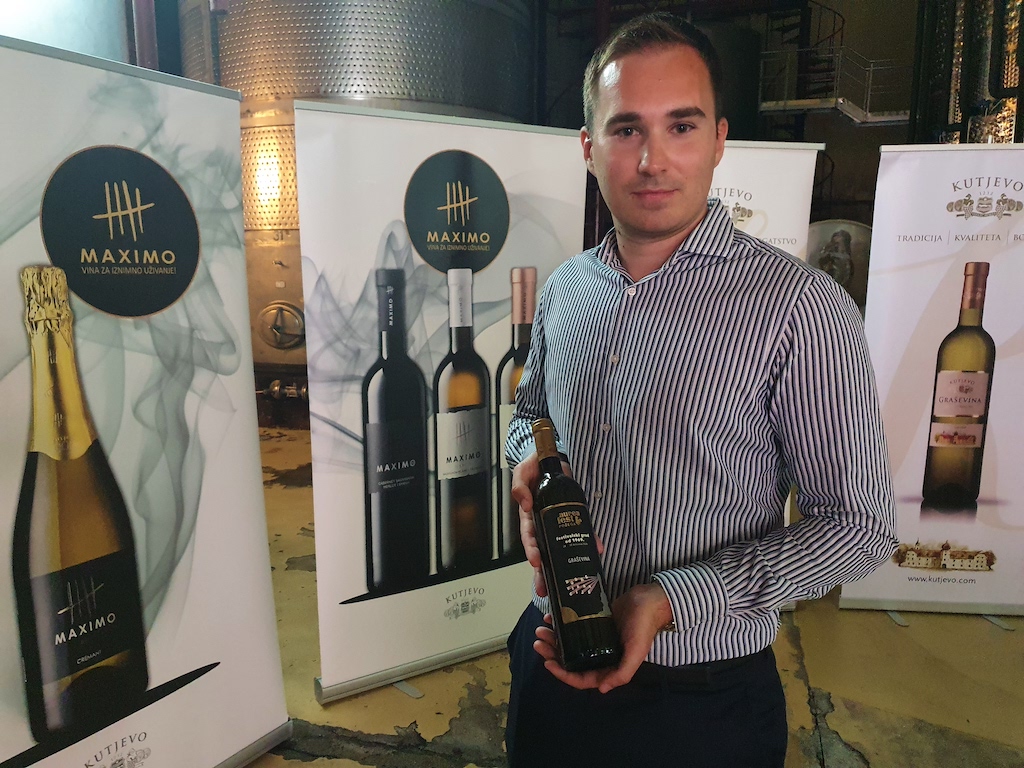
The organizer of the festival is the Association Aurea Fest Požega, whose director Ivan Bunjevac said that the association as the organizer will do everything to make the festival successful and thanked Mayor Puljašić for his support.
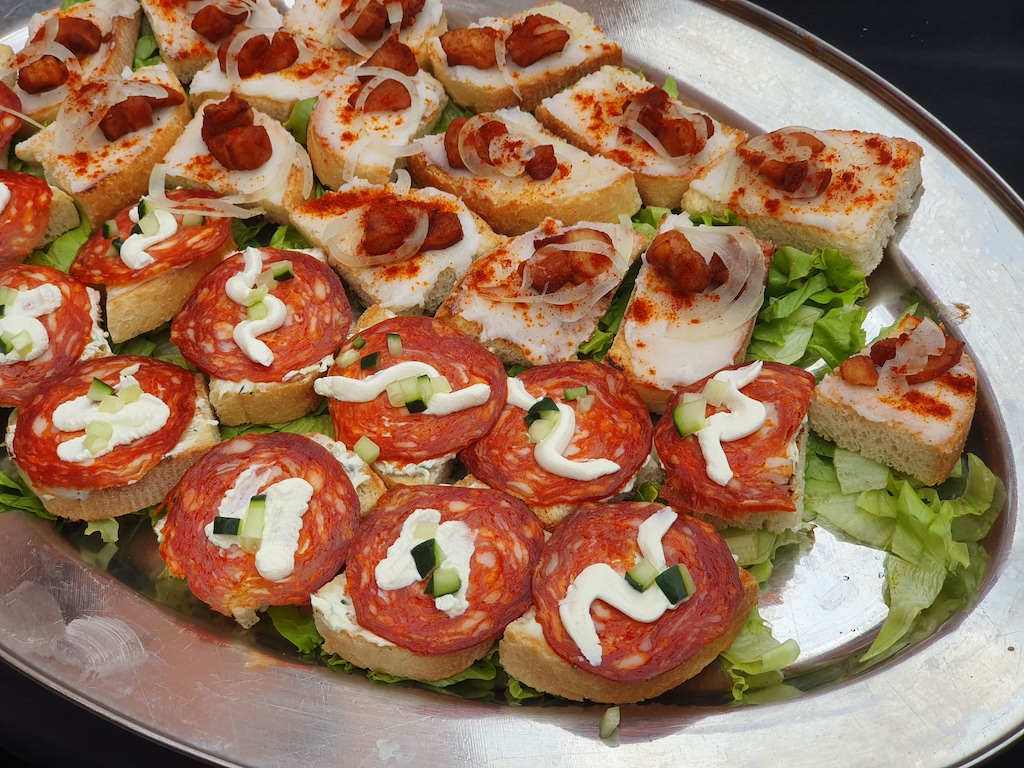
"Good vibes from Požega go further and we are expecting you this coming weekend," said Bunjevac. This was followed by symbolic labeling of the festival wine, in which the speakers were joined by Anamarija Blažević, Mayor of Pakac and Member of Parliament, Deputy Mayors of Požega Mario Pilon and Ferdinand Troha, Director of the Požega Tourist Board Silvija Podoljak, Mayor of Kaptol Mile Pavičić, Deputy Mayor Ivica Potočanac, representatives of the Croatian Radio and Television, local media and members of the Trenkovi Panduri Historical Unit.
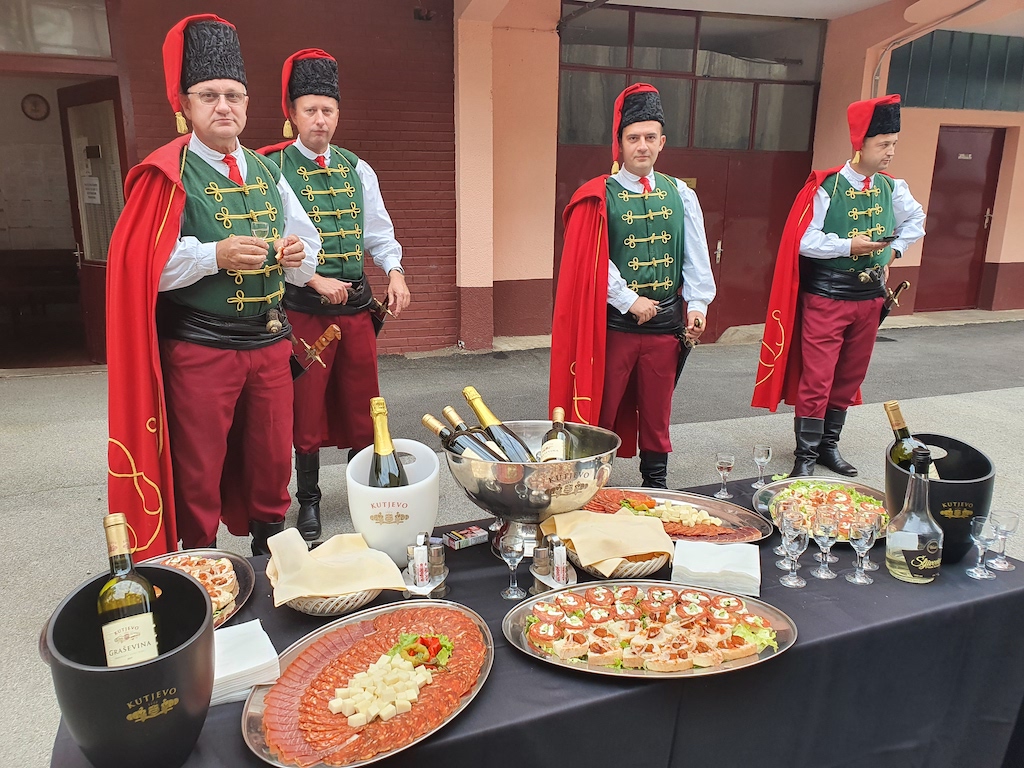
In the second part of the conference, this year's program was presented by Damjan Pirović, artistic director of Aurea Festa Požega, while Podoljak, marketing director of Aurea Festa Požega, invited participants and guests to adhere to epidemiological measures and invited citizens to follow the festival through the official website.
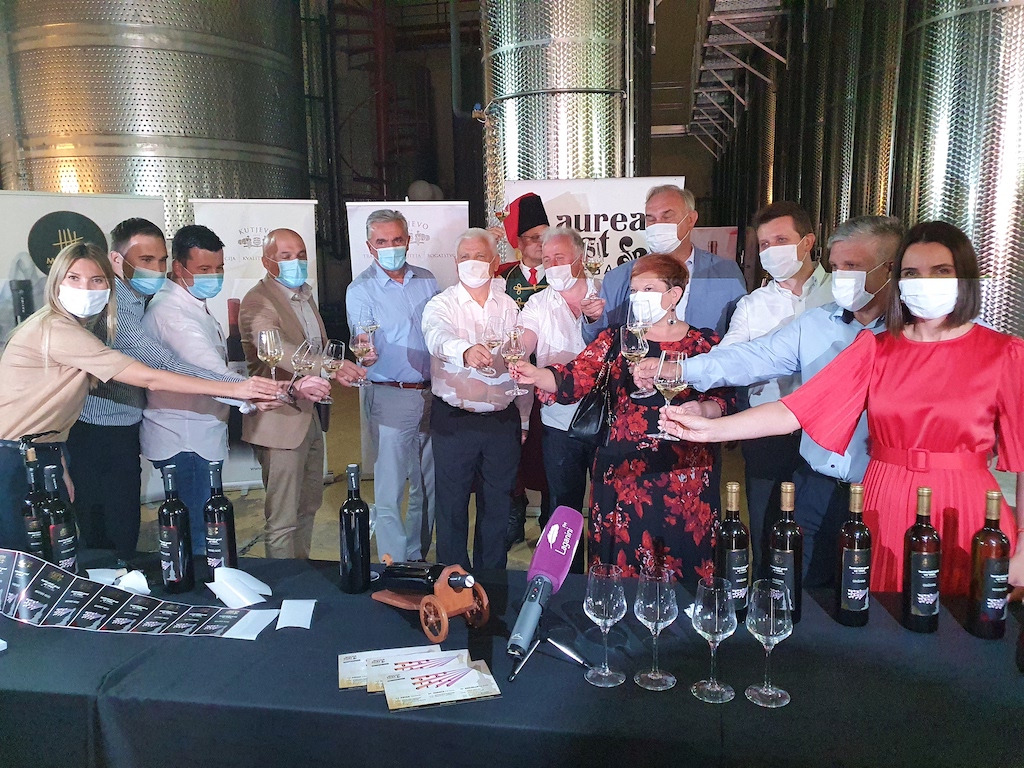
For the latest travel info, bookmark our main travel info article, which is updated daily.
Read the Croatian Travel Update in your language - now available in 24 languages
Join the Total Croatia Travel INFO Viber community.
Meet HGSS The Croatian Mountain Rescue Service
August 19, 2020 – All weather, all terrain, all year round – meet HGSS The Croatian Mountain Rescue Service, amazing volunteers who will never let you down
They're never far from the news. For the last two weeks, members of HGSS The Croatian Mountain Rescue Service have yet again been on the TV news every night. They're leading the search for a summertime visitor, a Polish hiker missing on Biokovo mountain.
But, watch again this winter and, for sure, they'll be in the headlines once more. Whether, they're scaling mountain ranges in the unbearable heat of high summer, searching underwater caves, flooded rivers or the sea, breaking through wild forest or trudging through metres of snow, they undertake their search and rescue missions over every terrain, in every weather condition, in every month of the year, all across Croatia. And, they all volunteers.
Marc Rowlands meets the head of service for HGSS The Croatian Mountain Rescue Service and three of its volunteers to find out who they are and what makes them do what they do.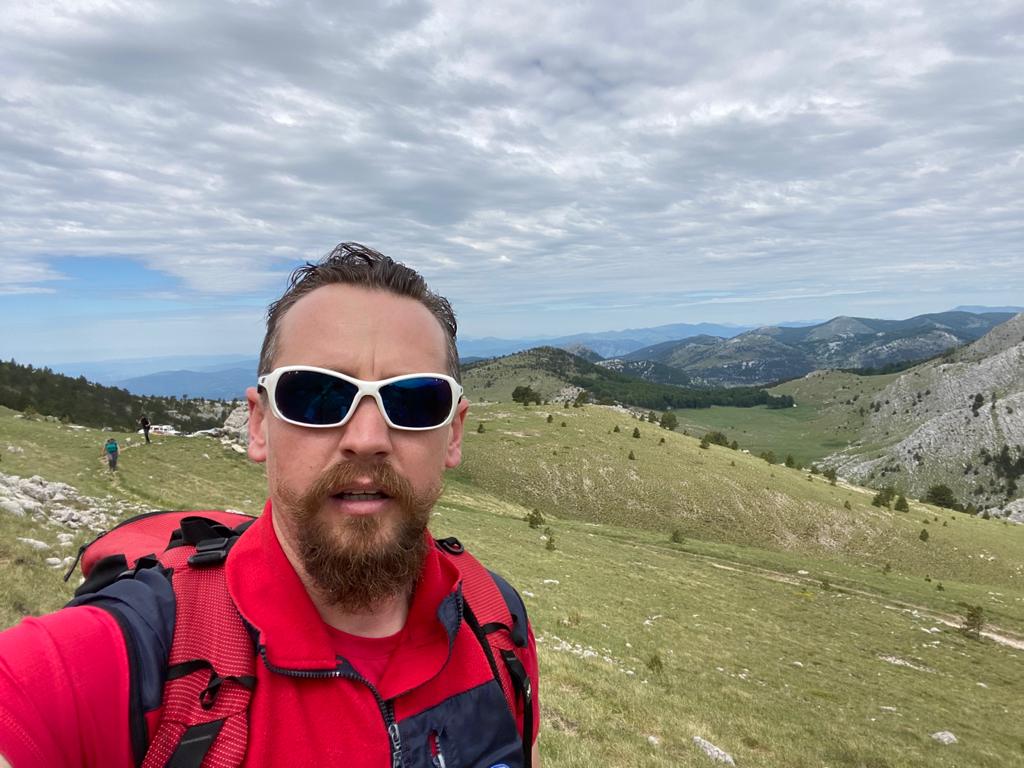
Josip Granić, head of service for HGSS The Croatian Mountain Rescue Service
My name is Josip Granić. I'm the Head Of Service for HGSS The Croatian Mountain Rescue Service. We've had an extremely busy couple of weeks. Being head of service for an organisation like this under such circumstances means you're always on the phone; co-ordinating, talking to outside organisations, members of the press. Communication. It's a 24/7 job, 365 days a year. If people need help, you can't take a holiday. Not at this level of the organisation.
We have around 1000 members. There are 11 paid positions in the main organisation and 25 people we pay to run the administration in each of the teams or stations we have. All of the members who perform the search and rescue are volunteers. We have pilots, surgeons, nurses, students, professors, every part of society.
I'm originally from Kaštela, but my home station is in Karlovac. I've been there for 15 years. I've been Head Of Service for two. Since I assumed the position, I've spent most of my time in the car. I travel all over Croatia.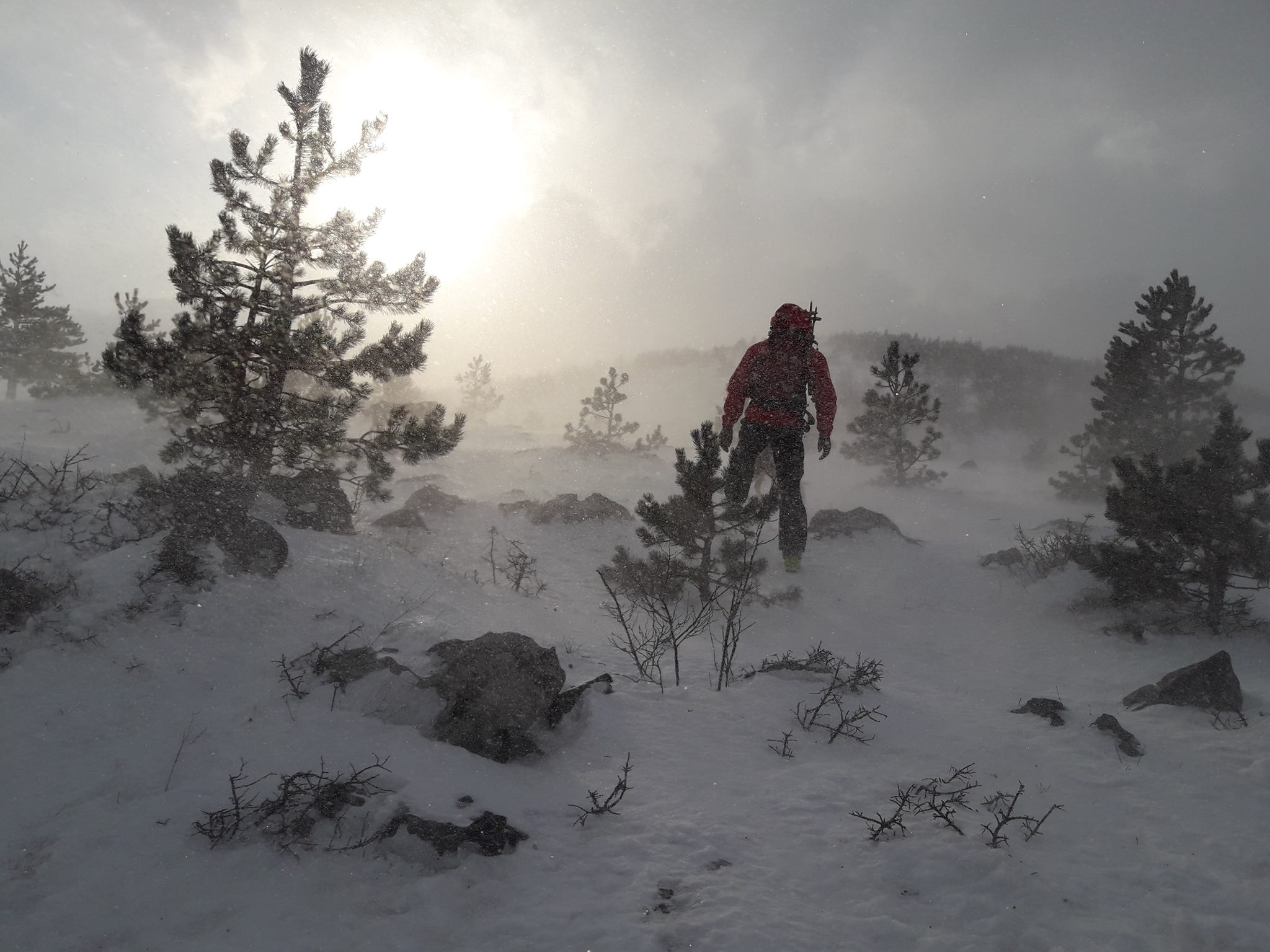
HGSS The Croatian Mountain Rescue Service missions can be hampered by extreme weather conditions © HGSS The Croatian Mountain Rescue Service
To get a certified position as a mountain rescuer in Croatia you all do the same training. It doesn't matter if you come from Slavonia, Dalmatia or Istria, you must have the knowledge and ability to deal with circumstances in any terrain; caves, pits, mountains, on snow, underwater.
Depending on where your station is, the type of call-outs you get could be very different. In Slavonia, 90% are for missing persons - searching forests, rivers, and in floods. We've had a big search on Biokovo mountain for the past 16 days. The stations from Split, Makarska, and Dubrovnik were at first involved, then teams from all over Croatia. It's not the same as Slavonia. The terrain is very different, so you have to be good at a particular set of skills. But, the largest percentage of call-outs is still missing persons. It's 70% of our work nationwide. The other 30% are rescues.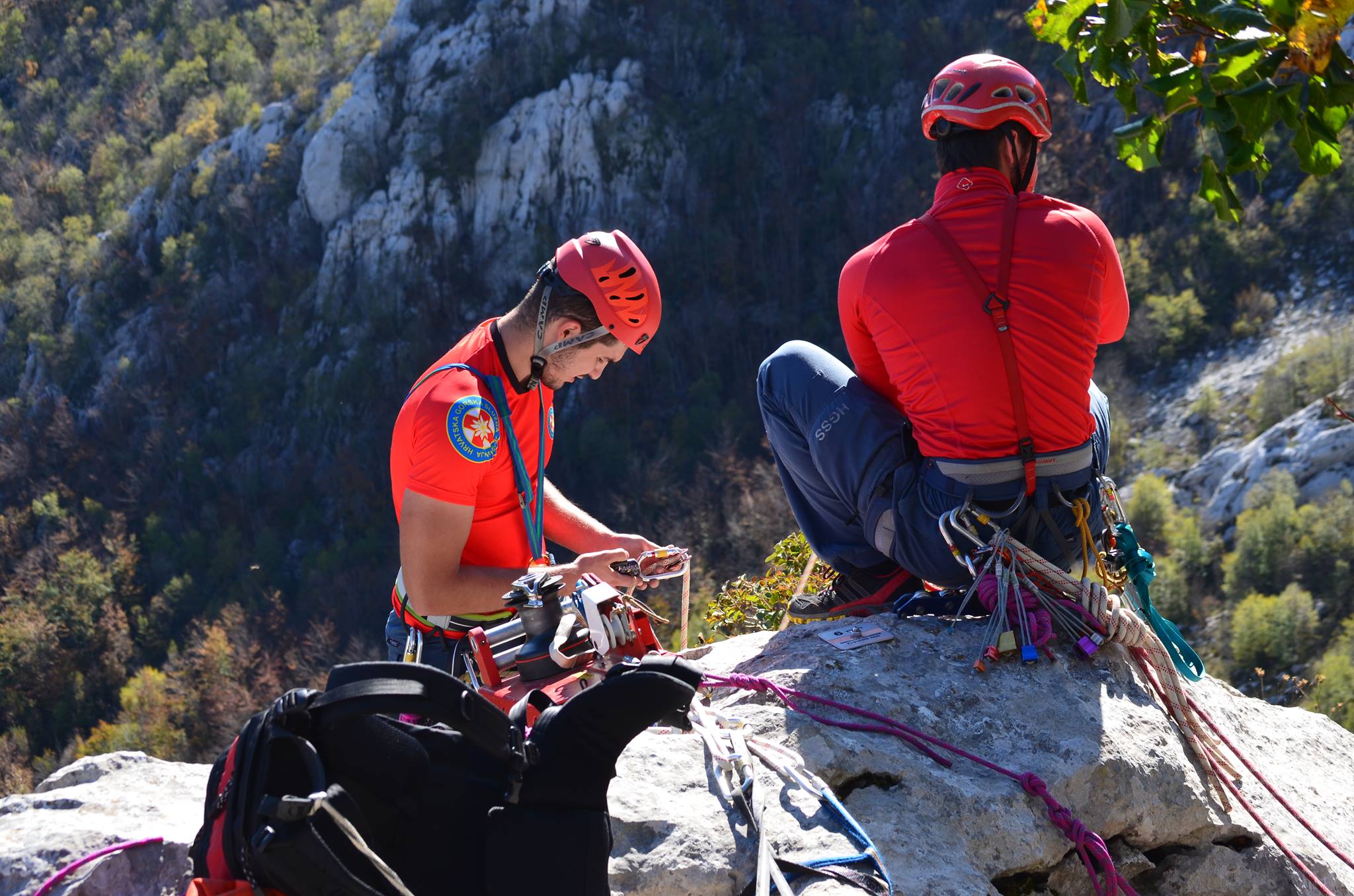
HGSS volunteers are educated to use a wide range of technical equipment. They are trained to operate in all the different kinds of terrain found across Croatia © HGSS The Croatian Mountain Rescue Service
There are usually 800 – 1000 missions a year across the country. We get roughly the same amount of calls in colder months as in warmer months. Only, winter months can be busier. The terrain is more difficult. There are some villages in Croatia – usually where the front line of the fighting was, around Karlovac, Kordun, Lika – and when it snows, it can be almost impossible to reach those places. But, some older people still live there. It can take days to reach them on snowmobiles, then skis, to deliver food or medecine. The other busiest places in winter are the ski resorts - Platak, behind Rijeka, and in Zagreb, on Sljeme. There are teams stationed in those places throughout the snow season.
What's the greatest danger of the job? Almost everything. Nothing in this job is easy. The greatest dangers we face are the same facing those that we rescue - underestimating the environment, nature, the conditions. That's where our training comes in.
In mountain rescue, we separate dangers into subjective, objective and technical. Subjective is the stuff you're guilty of - lack of preparedness, knowledge or equipment. Objective dangers are the ones you can't control, like sudden changes in weather, or avalanche. If you're sensible and informed, there should be no objective danger.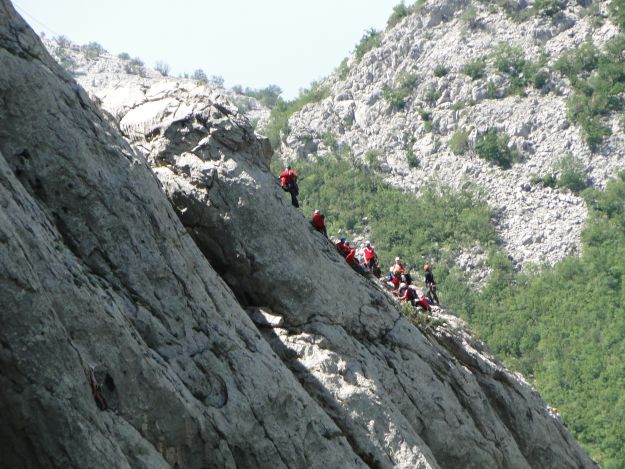
HGSS on a mission, clinging to a steep incline in Paklenica © HGSS The Croatian Mountain Rescue Service "People need to be aware at all times on the mountains. By the time most people think they may be in trouble, they've usually been in trouble for five or ten minutes already" Josip Granić.
80 – 85% of the people we rescue are Croatian. Only 15 – 20% are guests. People from Czech Republic, Slovakia, Poland, (Austria and Slovenia too) tend to enjoy nature more. They like hiking. That's the reason there are typically more rescues for those nationalities than there are for British, Belgian, French, Italian, America, Canadian or Australian guests. I don't remember the specific year, but sometime between 15 and 20 years ago we had a season where 5 or 6 Czech nationals were being searched for or, sadly, turned up dead. The media covered it and ever since there's been this myth that all the people who get into difficulty are Czech.
The question about expensive helicopter rides - why don't you charge the people you rescue - has been here forever. It's like this - if you're a tourist and you have a car accident in Croatia, the fire service, police and an ambulance will come. You won't get charged. We are a tourist country. According to international agreements, we are obliged to make everything safe for residents and guests alike. We are here, just like the fire service and police, to do our part. The Croatian air force is responsible for the helicopter rides and I have to give credit to them - they are crazy good pilots. Amazing. Even if we did charge everyone we saved - and most of the 85% of Croatians we save would struggle to pay - it still wouldn't be anywhere near the money required to run this service.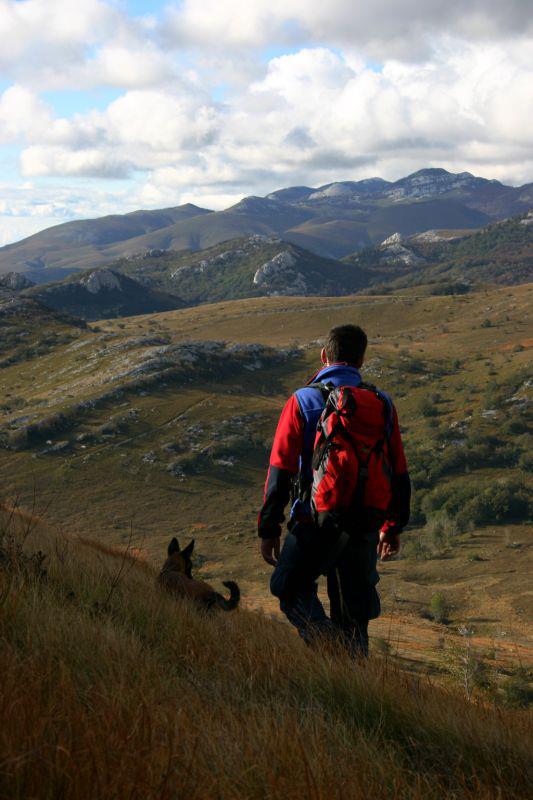
The Croatian Mountain Rescue Service used specially trained dogs on their searches © HGSS The Croatian Mountain Rescue Service
In 2007, I got a new search dog. It came from the Ogwen Valley Mountain Rescue service in North Wales. We cooperate a lot. We were sent out on a job to look for a three-year-old male child who had gone missing near Požega at the beginning of January, wintertime. His grandma was watching him and they were in a house on the edge of the woods. Early in the morning, he was playing with a dog. It suddenly ran into the forest and the boy chased after him. The grandmother didn't see it happen. I found him using my new dog, just after 8 o'clock the next morning. He'd been alone in the freezing forest for almost 20 hours.
Time is really moving fast on a job like that, because it's a kid and because it's so cold. Survival rates in such conditions are not good after 24 hours. When I found him, saw that he was alive, those big eyes looking up at me, it's a crazy feeling. You can't describe it. You can't compare it. A lot of positive emotions.
Every mission is special. We meet them all with the same level of determination and professionalism. But, it's the ones where you know you've really saved someone that stand out in the memory. Not the broken leg, where you transported someone – sure, that's an excellent job. But, when you know you've saved someone's life, that they definitely wouldn't be here now if it weren't for you, that's what makes it all worthwhile.
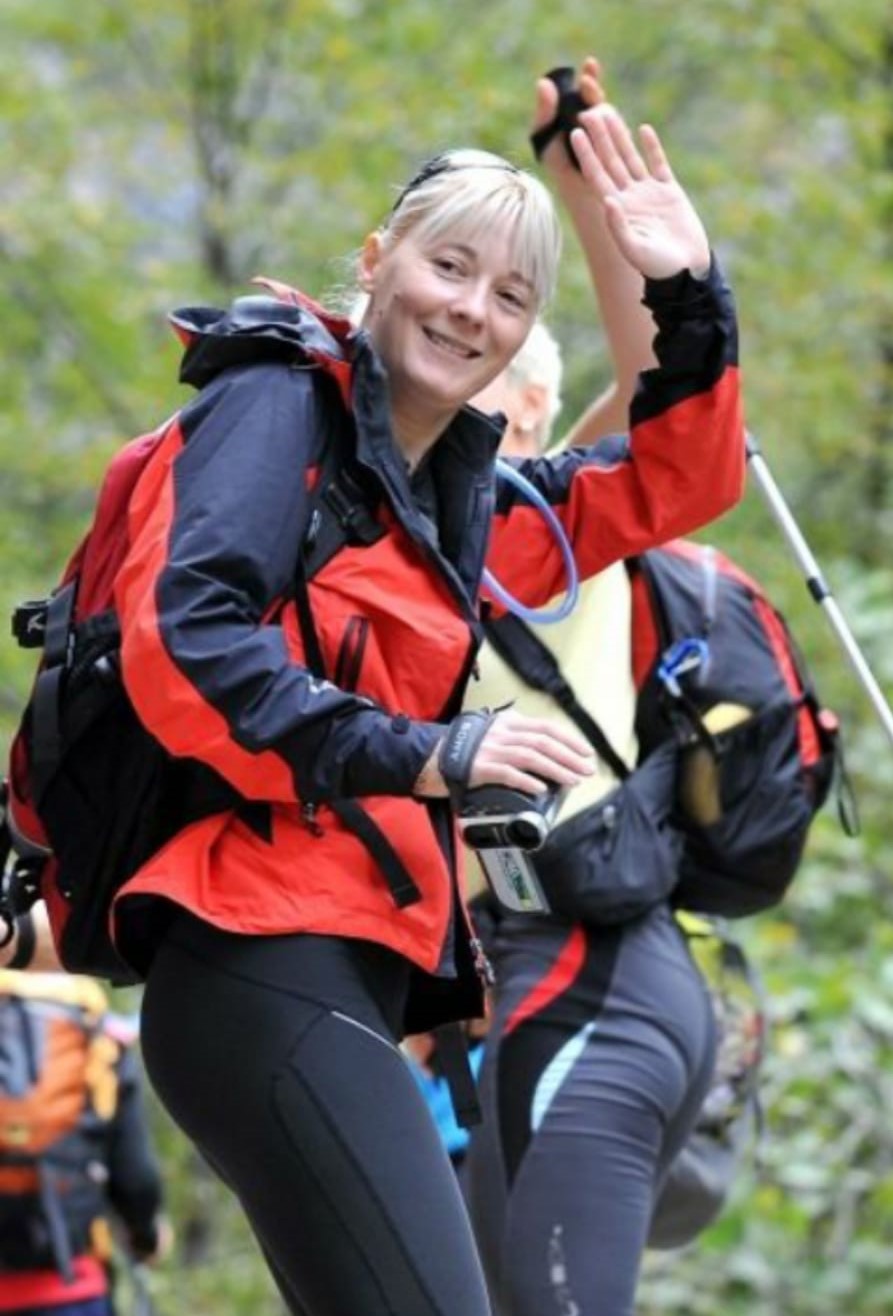
Jana Mijailović, volunteer for HGSS The Croatian Mountain Rescue Service
My name is Jana Mijailović, I'm 48 years old and I'm from Zadar. I finished school to be a teacher, but I never did it. My husband and I run a company that does plastic and aluminium windows for houses.
I started to go into the mountains when I was at high school. I never had the ambition to be part of mountain rescue services – people just noticed me on the mountains. They said I'd be good at it and asked me to join. I met my husband on the mountains. We are both volunteers for HGSS The Croatian Mountain Rescue Service. I've been doing it for 16 years.
I was a member of the first and second all-female Croatian expeditions to the Himalayas. We first climbed Cho Oyu in 2007, then Mount Everest in 2009. Croatia is the only country in the world that has only one successful male climber of Mount Everest, but four successful female climbers. I sometimes work as a guide too. I guess you could say I'm all about the mountains.
Being a climber, an Alpinist, I know that if I get into trouble, it's only my HGSS colleagues who can help. I feel this instinctively. I cannot be in the house, safe and warm, knowing that maybe someone needs help that only I can provide.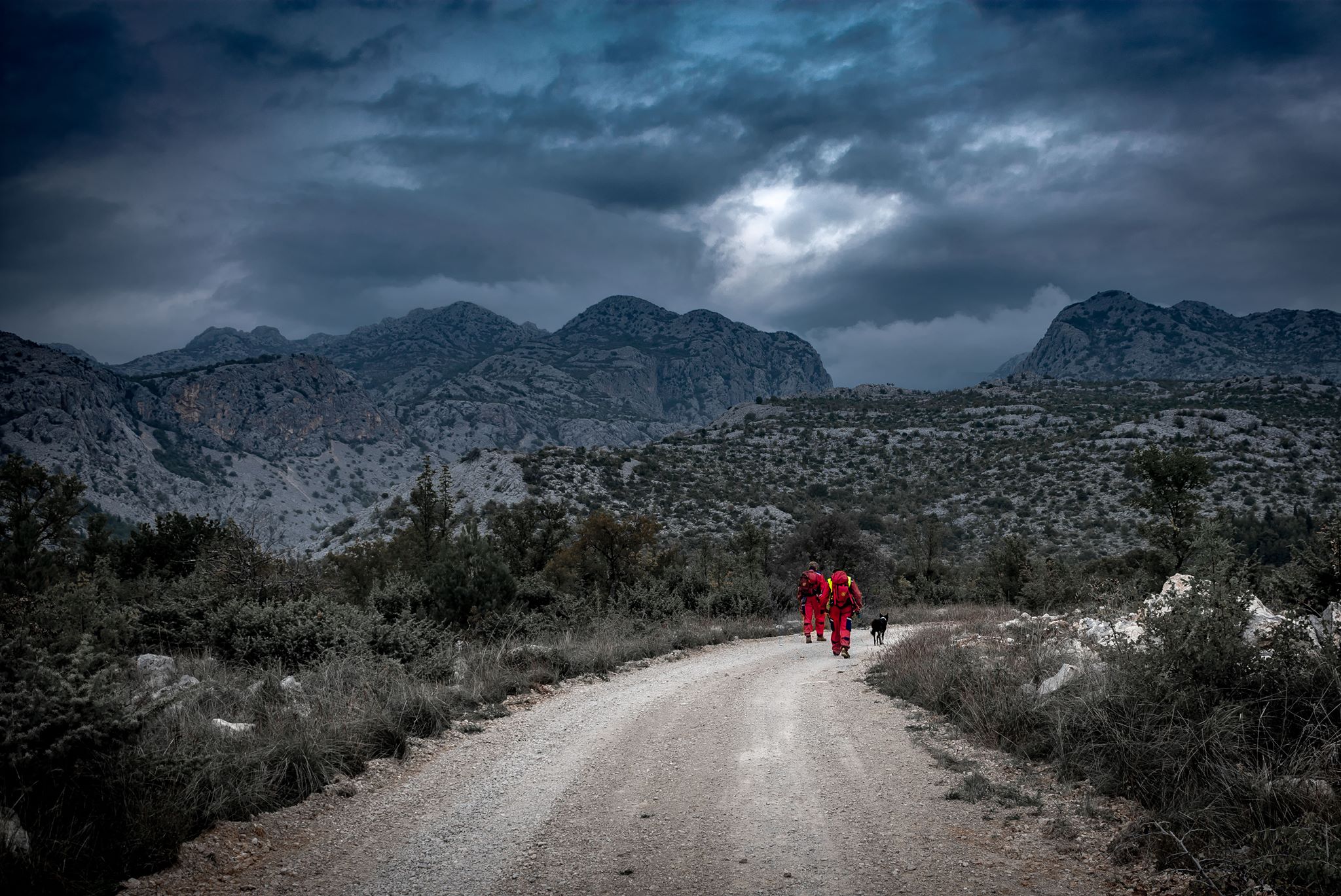
HGSS The Croatian Mountain Rescue Service members entering Paklenica under foreboding skies © HGSS The Croatian Mountain Rescue Service
I've really been on so many expeditions with HGSS. My station are on duty in the season at National Park Paklenica and I'm now the coordinator. Climbers from all around the world come and so there are many interventions. None of them are easy because the terrain is incredibly difficult. You really have to be in shape and know the techniques inside out.
I'm very proud of my statistics. Everyone I've rescued, who was alive when I reached them, is still living today. Unfortunately, not everyone we reach is alive when we arrive.
I remember one time, my husband and I were having dinner. We were arguing about the techniques and knots for moving a stretcher down a vertical climb. The training is so intense, you really have to know it well, and I guess that's just the kind of people that we are, that we would be arguing about it in our free time. Ha! He told me, "Why do you care? You'll never have to do that," because usually, it's really strong guys who do that specific job. If you're on a 400-metre-high section of rock, it really takes a lot of muscle.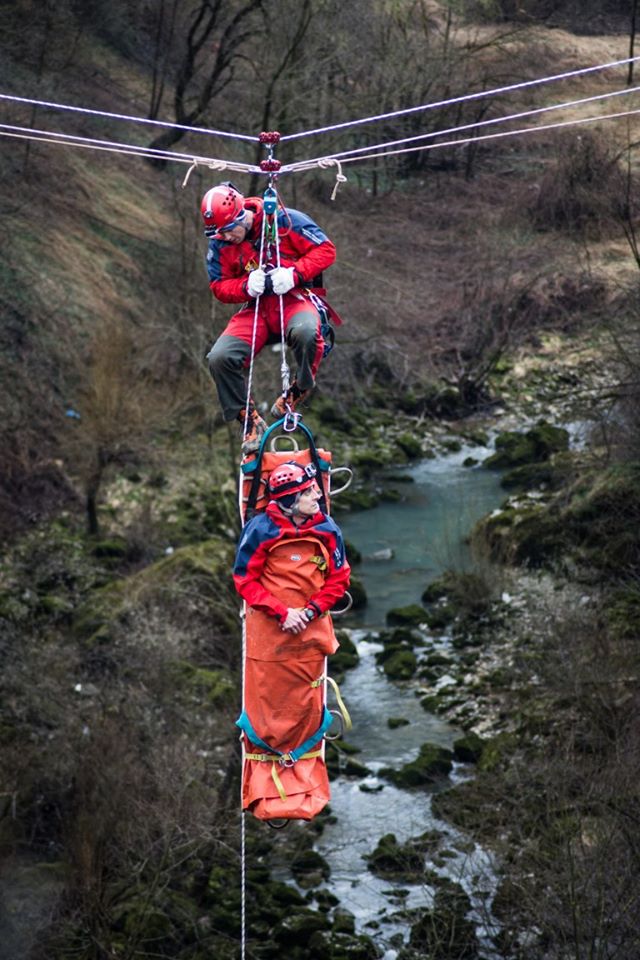
Ascending from a valley floor or descending from a mountain peak with a stretcher is a technically difficult operation, often hindered by darkness and adverse weather conditions. It requires a lot of training and a lot of muscle © HGSS The Croatian Mountain Rescue Service
In the evening, just two days later, we were called out to rescue an Italian guy who broke his leg on Anića Kuk. It's a really mighty part of the stone. And the leader of the expedition asked me to go on the stretcher. They pull you down on the ropes and you have to push very hard to keep the stretcher, the person you're carrying and yourself away from the rock, while balancing the weight of all three. It was dark, raining and with lots of Bura, the incredibly strong wind that sometimes hits us. That's probably my most memorable rescue.
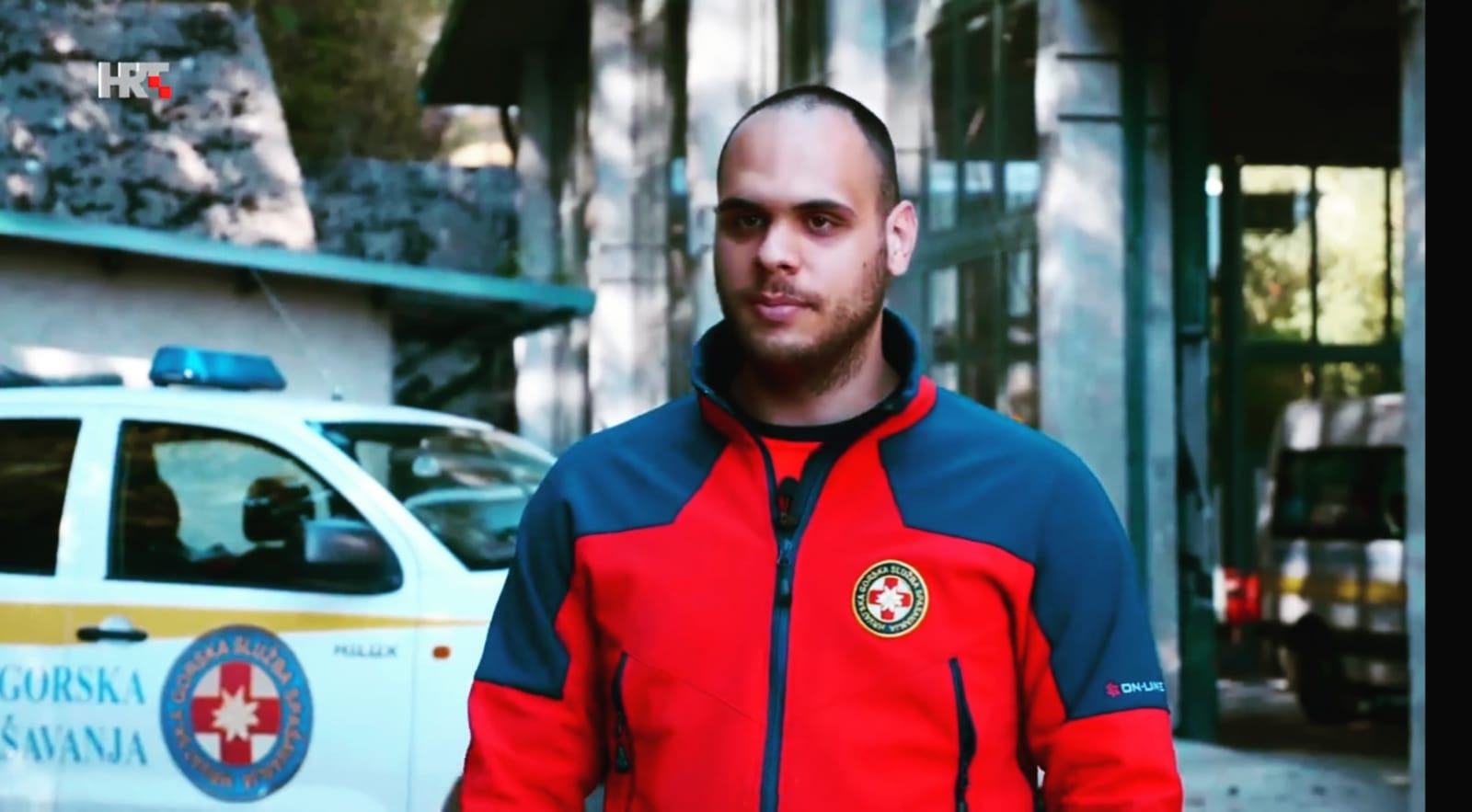
Petar Prpić, firefighter and volunteer for HGSS The Croatian Mountain Rescue Service
My name is Petar Prpić, I'm 25 years old and I'm from Hrvatska Kostajnica, just on the Croatian-Bosnian border. My station is in Novska. In my full-time job I'm a professional firefighter. I guess I have two dangerous jobs. Well, one job and one hobby.
I've always been interested in the outdoors – mountaineering, hiking, canoeing. But, that's not why I joined HGSS The Croatian Mountain Rescue Service. I just wanted to help people. I don't know, I guess it's just something in me.
We have a lot of rivers in our area. During the times of flood, we get a lot of call-outs. Our part of the country has a high percentage of elderly people in the population. A lot of them live in small villages, on the edge of the forest. We get a lot of call-outs for searches. Especially in the autumn when people go out looking for chestnuts or mushrooms. But, like all the stations in Croatia, we are here year-round if there are any actions in other parts of the country that need us.
In some areas, HGSS The Croatian Mountain Rescue Service are frequently called out in response to flooding. This picture shows HGSS members on operation during the 2014 floods. In that year, flooding across the whole region was so bad that HGSS members operated not only in Croatia, but also donated their services to neighbouring Bosnia and Serbia © HGSS The Croatian Mountain Rescue Service
I was just on the search in Biokovo. The head of service called me and asked me to go. I first had to get some free days from my job. I called my boss, Zvonimir Ljubičić, chief of the fire department. He's great, very understanding, and he gave me permission. Two years ago I was called to Rab. Very hard operation, very difficult terrain.
Late last summer, we were called out to look for an older man near Glina. It was around 11 o'clock in the evening. He'd gone to look for mushrooms in the afternoon and never came back. Police were there and they sent for us.
The man had a cell phone on him, but there was no signal. There was no location given off the phone. We were a team of four, split into two teams. We went up into the woods above Glina and concentrated our search on areas where we could see there was no telephone signal on our phones. We were yelling in the dark. After an hour of search, someone answered. He'd been missing since 2pm. We found him at 2am. He was just lying there, uninjured but unwell, unable to move.
The reason it sticks in my mind is that the next day, in the morning, his daughter called me. She was so thankful, so emotional. For sure we saved his life. None of the other emergency services who were present could find him. It was down to us. We finished the operation at about 6am and then all four of us had to go immediately to our regular jobs.
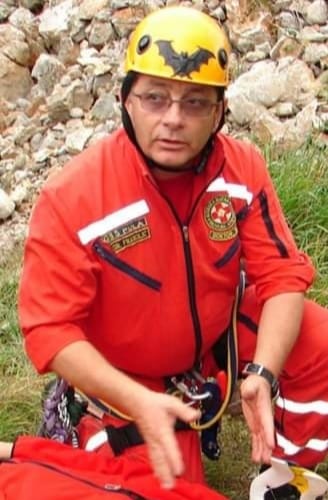
Mario Franolić, physician, ex-commando and volunteer for HGSS The Croatian Mountain Rescue Service
My name is Mario Franolić and I'm 60 years old. I'm the chief of the mountain rescue service in Istria. I travel throughout Croatia because I'm also an instructor for the medical commission of HGSS. I was born on island Krk. I'm based in Pula although I work in Rijeka. I travel a lot between the two. I've been with HGSS The Croatian Mountain Rescue Service for 18 years.
In my day job, I'm a physician. I am a senior mentor at the Institute for Underwater and Hyperbaric Medecine in the Clinical Hospital Rijeka. I'm an expert in my field of emergency medecine. I've been doing it for almost 30 years.
When I was young, I trained to be a physician in Belgrade. It was then the best medical faculty in Yugoslavia. At the same time, I also started spelunking (cave exploration). I've been doing it since 1978. Later, I was a physician in the military underwater commando unit. I lived in Austria for five years, but when I came to Pula, they were just starting the HGSS The Croatian Mountain Rescue Service station here. They asked me for help because they didn't have any medical professional on the team. I accepted. It would be a waste not to use all these skills I have.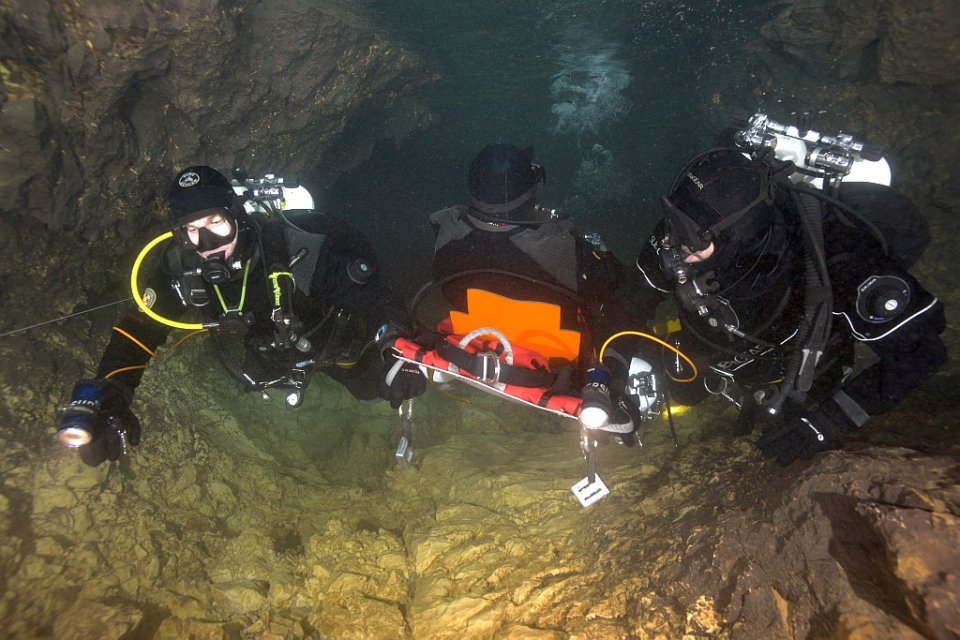
Specialist teams from HGSS are trained in underwater rescue from caves. Such caves exist all over Croatia in the karst rock, and also on some islands © HGSS The Croatian Mountain Rescue Service
Sometimes, our status as volunteers can give us problems. Although we have official duties, we are more like an NGO than something like the police. There can be legal implications. I remember one situation, very acute because a paraglider fell from the sky. None of his colleagues saw him fall. Paragliders go into the air together, but then they each branch off to do their own thing.
We had no idea about the location. We started from the last point of sighting, knowing that it could be very far from the place where he actually fell. But, we had to start somewhere. We had one mobile phone signal direction. But, you need three in order to locate someone. We only had a line on the map.
In the past, HGSS The Croatian Mountain Rescue Service sometimes had difficulties because the telephone companies wouldn't give us the information we needed in order to triangulate the position of a missing person. They would only give it to the police. But, it's a race against time. We searched for this man all day and all night. In the morning, some Croatian paragliders made private contact with a guy from the phone company. They begged him to release the information we needed. Although he could lose his job, giving such information to private citizens, he did it.
We found the man about 150 metres from where we were. Sadly, he was already dead. It was very small comfort to see that he had died instantly, on impact. It's unbearable when you reach someone you could have saved if only you had got there quicker, especially in an instance such as this, where we were hindered by a lack of information that was available. I think it moves more quickly now, but still we have to go through the police.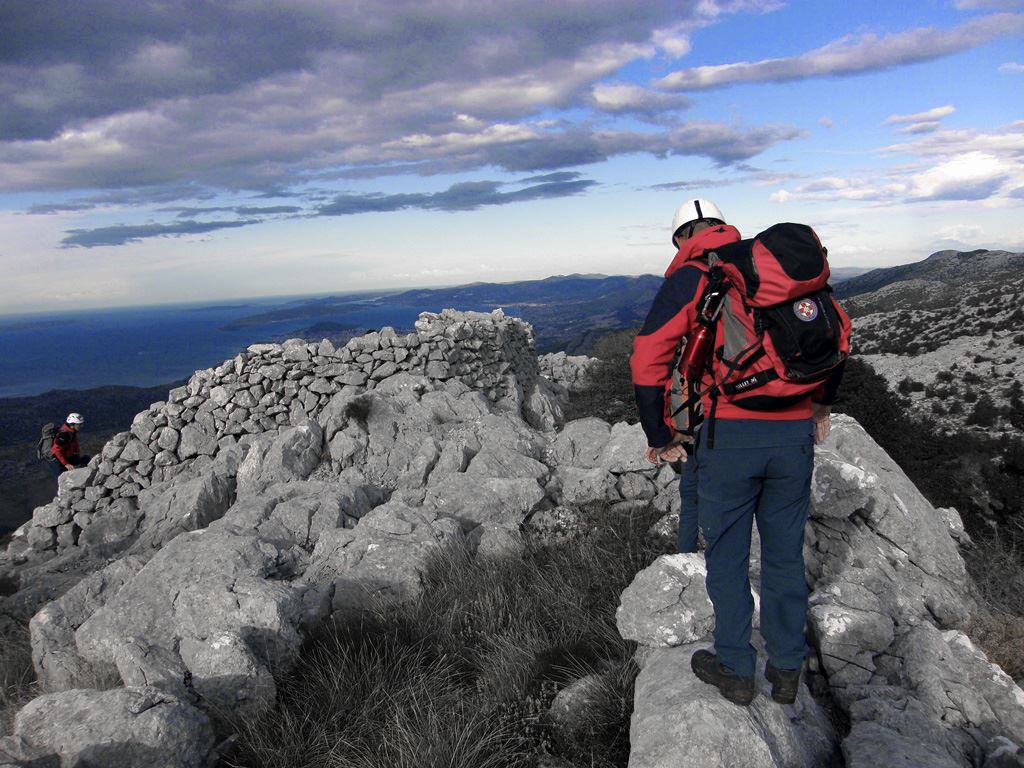
© HGSS The Croatian Mountain Rescue Service
One of the most emotional operations I went on was around five years ago, the rescue of a young girl - maybe two and a half to three years old – who got lost in the woods in a small place in central Istria. She chased into the forest after some dogs around 10 or 11 in the morning. The family saw immediately that she had disappeared and started to search. About two hours later, we were called out. It was impossible for the family to find her.
About 300 people came – my station, the Rijeka station, hunters, firemen, police and volunteers. In such an operation, the police are the lead service. But, 99% of the time they leave the organisation of the search to HGSS The Croatian Mountain Rescue Service. We are the only organisation who is very well educated in organising searches. When other people do searches, they use intuition. But, people all have different intuition. It can be chaotic. We are highly trained for this. There are procedures, recognised internationally, that we follow. We found her early in the morning, at around 7 o'clock. The dogs were lying on each side of her, giving her warmth.
All photos courtesy volunteers and HGSS The Croatian Mountain Rescue Service
Supernova Group Opens 15th Store in Croatia, Jobs for 300 People
The coronavirus pandemic might have made the vast majority shy away from investing cash as the economic downturn across the world began, but it hasn't stopped everyone. The Supernova Group hasn't let the worrisome economic situation get in the way of opening its fifteenth Croatian store.
As Poslovni Dnevnik writes on the 15th of June, 2020, the popular Supernova Group is set to open the doors of its fifteenth shopping centre in the Republic of Croatia this Thursday. The Supernova Pozega Retail Park is a new family shopping destination located at the western entrance to the continental Croatian town of Pozega and is an entirely new facility.
The total value of the investment stands at an enormous sixteen million euros in total, and the opening of the new shopping centre has resulted in the employment of around 300 people, which is excellent news amid the pandemic and the demographic issues Croatia, especially the continental part of the country, has been facing for years now.
The brand new Supernova space covers 11,000 square metres, within which there are sixteen shops and one catering facility. The retail park was built on a plot of 47,000 square metres, and 450 parking spaces were provided for its customers and visitors.
In the new sales area of the Supernova Group, customers will be able to find stores belonging to popular and very well-known brands, most of which are making their debut in this particular Croatian town. From Thursday onwards, the following will be open to all visitors: Baby Centre, C&A, CCC, Deichman, DM, Galileo, KiK, New Yorker, Pepco, Sinsay, Sport Vision, Top Shop and Teddy.
During the summer months, three more facilities will open their doors - the Leggiero coffee bar, the Admiral slot machine club and the famous and equally popular Italian food chain - Eurospin.
For more on shopping in Croatia, follow our lifestyle page.
Rubin Kazan's Filip Uremovic Talks About Being Home in Pozega during Corona Crisis
April 17, 2020 - TCN's Slobodan Kadic interviews Rubin Kazan footballer Filip Uremovic upon his return home to Pozega.
While in Russia, just like in the rest of the world, the coronavirus pandemic is spreading, and most of our footballers who make money by playing in the Russian Premier League have returned to their homeland. Since there are no more group gatherings and training, Pozega native Filip Uremovic (23), a former defender of Dinamo and Croatia's U-21 team, arrived from Kazan (820 km east of Moscow) to Zagreb and immediately headed to his native town in the 'Golden Valley'.
"At the last moment before the border closed, I left Russia, together with teammate Silvije Begic, and Kristijan Bistrovic and Slovenian Jaka Bijol from CSKA. We rented a private jet so we could be with our families during this time without football! Of course, already at the Zagreb airport, I was told I needed to self-isolate, which I respected until the end," points out Uremovic, who has been defending for first-league club Rubin for two years.
Slobodan Kadic
Other well-off Russian first-league clubs have also hit a severe crisis and have introduced austerity measures. Salaries have been cut and football players have voluntarily agreed to a 50 percent reduction in wages. According to one of Rubin's best players, their pay for March, April and May will be cut in half, though the club management notes that there is a possibility to reimburse players in the future. Coach Leonid Slutsky's players are not exactly sure how they will end up, because nothing has been signed yet.
The Russian first-league is on a forced holiday until May 31, and a decision is being made to continue the league (which should end by August 2), so everything else will be adjusted accordingly. Twenty-two rounds out of 30 were played. Rubin Kazan is currently in 14th out of 16 clubs with the same number of points as Orenburg. It's pretty dense because as many as seven clubs are within seven points. Nine points ahead of Corluka's Lokomotiv is Zenit in first, while Akhmat Grozny, the biggest contender for possible relegation from the league, is in the last place, though now everything is possible - even their stay.
"The climate is not only bad for football players but for everyone. The economic situation is not great and if I have to grit my teeth for a few months, I don't think anyone will fail because of it. I read in the news that at Liverpool, they are not cutting their salaries, but the players, in turn, are giving money for humanitarian purposes. However, the policy of each club is different and maybe some rich clubs don't have to cut anything. Oil workers fund my club and we know the current situation with oil prices. Nobody likes to lose money, but if the climate is like that, we will endure," explains Uremovic.
The Russian Federation is not small, and life in every corner of it is interesting. But the farther one is from the biggest cities like Moscow, St. Petersburg or Yekaterinburg - it is even more interesting!
Slobodan Kadic
"I'm used to Kazan and I like it because it's affordable, and the people are OK! The league is great and can progress both professionally and vitally. My football camp is about ten minutes away from the apartment, which is fantastic considering that most Russian football bases are far from the city. The only objection is that we are isolated from traffic as all flights to our part of the world go through Moscow. There used to be a direct flight to Belgrade, and it is rumored that in the near future, they could return it again, which would be a real hit," adds Uremovic, who has a contract with Rubin until June 2024.
Uremovic finished his story with the U-21 Croatia national team and can now only play for the A-team. However, he has not yet received a call, and has not spoken to coach Dalic yet.
"Of course, like every player, I expect a call, I would be happy if that happened. It is a great pride and honor to play for your country. To be honest, it's a complex issue because we have a lot of good players and the competition is great in every position. We will see in due time," hopes the Croatian legionary from Russian Tatarstan.
In Pozega, Filip trains daily, time passes by quickly with his family, the pandemic should soon cease and he will be on the first flight to Kazan, a club where he is popular and which counts on him in these difficult times. Especially since he is praised by Russia, and by the end of this part of the championship, he was one of the top three defensive players.
Slobodan Kadic
"I still need to make a lot of progress because I am a young player; statistics are one thing, and the other is being on the pitch. It's good for me to be in the company of Ivanovic, Rakitski... I'm on the right track," Uremovic concluded as modest as ever.
The Croatian defender is passing the time with the television series he adores. He is fond of the Soprano Family, and when asked whether he misses the famous Tartar and eastern dessert Çäkçäk, he answers no. He has tried this dessert several times, but he can do without it, because his mom Andreja cooks the best!
To read more about sport in Croatia, follow TCN's dedicated page.
Golden Slavonia: A New Brand to Improve Quality Tourism of Region
October 17, 2019 - Golden Slavonia is an integrated quality management project that brings together the Tourist Boards of Pozega, Lipik, Pakrac, Pleternica, Kutjevo, and the Velika Municipality, and the company Feel IQM.
Namely, HRTurizam writes that integral quality management is a model for the development of Pozega-Slavonia County as a tourist destination called ‘Golden Slavonia’. The project coordinator is the Pozega Tourist Board director Silvija Podoljak, while all tourist boards in Pozega-Slavonia County are participating in the project.
The goals of this project are an essential segment for each individual stakeholder, namely: increasing the number of quality entities, increasing the number of guests, increasing revenue, improving the quality of the destination, improving the quality of events, connecting stakeholders within the destination, creating an experience economy, getting to know the destination and consolidating the Golden Slavonia brand.
With this mutual synergy, they hope to extend the season, raise values and revenues, and ultimately achieve satisfied guests and residents. This goal requires constant coordination, training, and open communication with each other, and measuring the quality of each segment, which ultimately represents the evaluation of the entire destination.
As part of the project, on Monday, October 7, workshops were held at the Entrepreneurial Incubator in Pozega with target groups of tourism entities, who expressed great interest in the project, the need for this type of education and networking, and the willingness to work continuously for results.
IQM is the systematic, integrated quality management within a destination. The aim of "IQM Destinations Golden Slavonia" is to harmonize quality standards between stakeholders in tourism, to equalize the quality of business of all participants, and to encourage excellence.
The prerequisites for implementing IQM in a destination are several successful destination projects so far, which are the basis for creating standards in quality, communication and the desire for progress in the destination across all management levels, the existence of strategic development documents, and interest in quality synergy in the destination.
The project will involve entities that contribute to the development and quality of tourism (owners of accommodation facilities, caterers, OPGs, attractions, tourist agencies, souvenir shops, associations, etc.).
The "IQM Golden Slavonia" project monitors quality, measures growth, progress and implementation, publicly presents standards, monitors stakeholder challenges, respects access to responsible tourism, raises stakeholder awareness of the importance of tourism in the destination, and creates circumstances of excellence. Partners receive a report at each implementation phase.
Given that there are more entities interested in participating in this project that have not applied, the deadline for applications has been extended to 2 November 2019.
To read more about travel in Croatia, follow TCN’s dedicated page.
Bike & Hike Grgurevo Held in Požega
During my visit to Požega last month, I was impressed by the enthusiasm with which Igor Marač, the owner of the Luks Bike Adventure agency, spoke about an event he was organising on the occasion of the day of the town of Požega, which he named the Bike & Hike Grgurevo. It was a good reason for me to spend the second Saturday in March in Požega, the largest town in central Slavonia.

Požega is hidden in the hills, somewhat isolated, but for that very reason surrounded by a slightly mystical aura. Other major urban centres in Slavonia are located in the lowlands of the great rivers, the Danube (Vukovar) and its direct tributaries, Sava (Slavonski Brod) and Drava (Osijek), while Požega has the Orljava river and the Golden Valley.
After Našice, we leave the flat Slavonia and follow the winding road over Krndija. After the Gradac pass at 355 metres above the sea level, we descend on the Slavonski Brod road and turn left towards Požega. At Bektež, a village known for sparkling wines produced by the Josipović family, we descend southwest towards Požega, crossing the Golden Valley and enjoying the views offered by the surrounding hills. To the right or north of us are Krndija and Papuk, behind which there is the Podravina plain, and to the left or south is the Dilj hill, behind which is the Posavina plain. Unlike some other roads in Slavonia, this road is excellent, with occasional bends and windings breaking the monotonous driving experience.
At the entrance to Požega, large crowds, commotion, bustle. It is not surprising, given that this is the day of this town. We find out that there is also the oath-giving ceremony for the 24th generation of volunteer conscripts, some 360 of them, which has brought additional visitors to the town. On our way back, we will hear more about this event on the radio, including the fact that this is the second largest generation of female volunteers since the beginning of voluntary military training. It is appropriate news given that the day before was the International Women’s Day. Emancipation of the female gender has (finally) reached the Croatian armed forces.
The town centre hosts a local delicacy fair, bringing together producers from all over Slavonia (and Baranja). I meet Petar Dobrovac from Kneževi Vingradi, and Pero immediately offers me his sausages and pork rinds. He is always on the move, and in a couple of days, he will go to a fair in Dubrovnik.
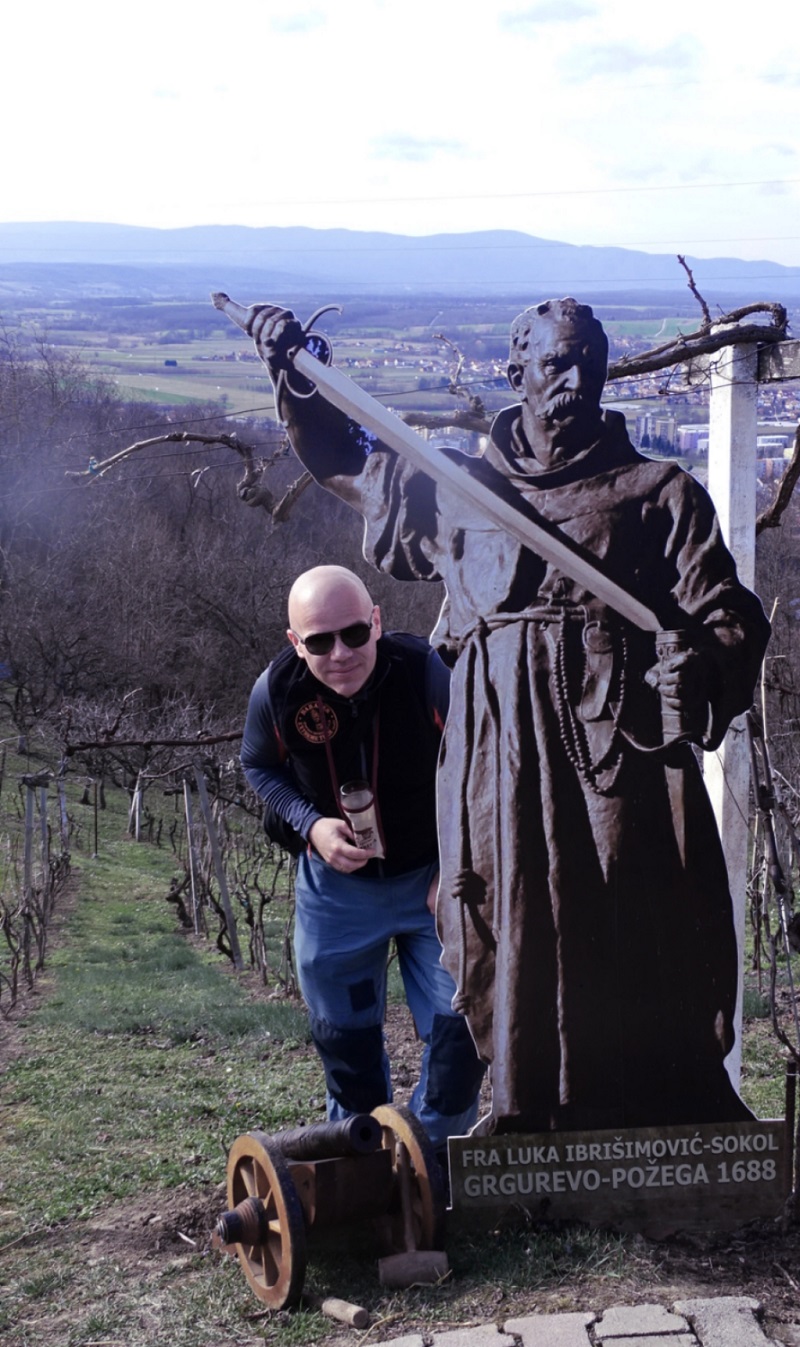
A parade of historical units followed the modern soldiers. We sit at a nearby cafe and watch the show: people from Herzegovina, Lika, historical groups from all over Slavonia. This militarisation of the town’s celebration is quite understandable. According to the folk tradition, on 12 March 1689 (on Grgurevo), f. Luka Ibrimimović expelled the Ottomans from Požega. After a living history performance at the cathedral of St. Teresa of Avila, which evokes this historical period, it is the finally time to head to the Požega Hills to enjoy the wines and local delicacies.
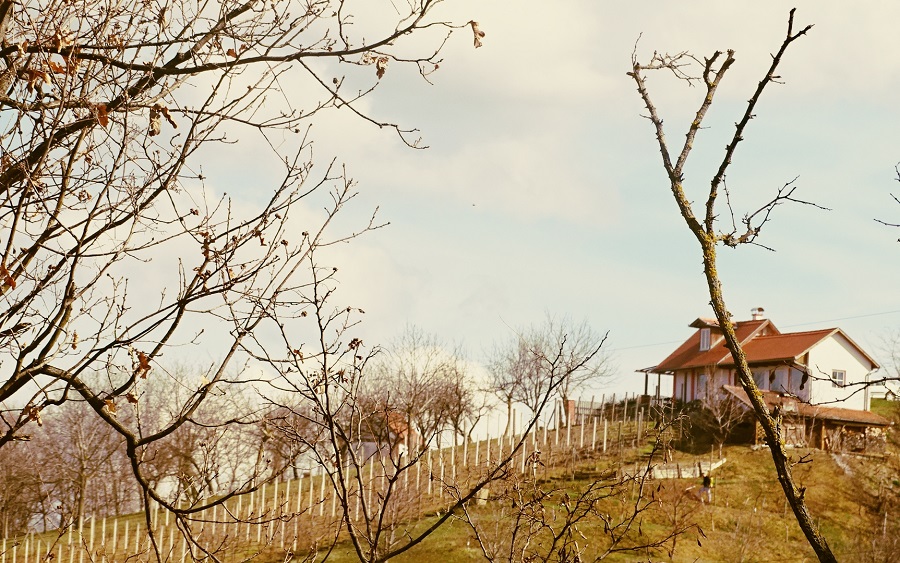
After passing by the St. Vid chapel and enjoying the town panorama, we first visit the Jurković wine house. Tamburitzas, čobanac, wine, brandy, cakes... a winning combination. However, the čobanac stew was mild, not as spiced with paprika as I am used to, but quite delicious. Besides, there is no accounting for taste. A mild čobanac can always be spiced up, but the spicy hot čobanac can be made any milder. What is important is for it to be delicious to as many visitors as possible, and there were a lot of them.
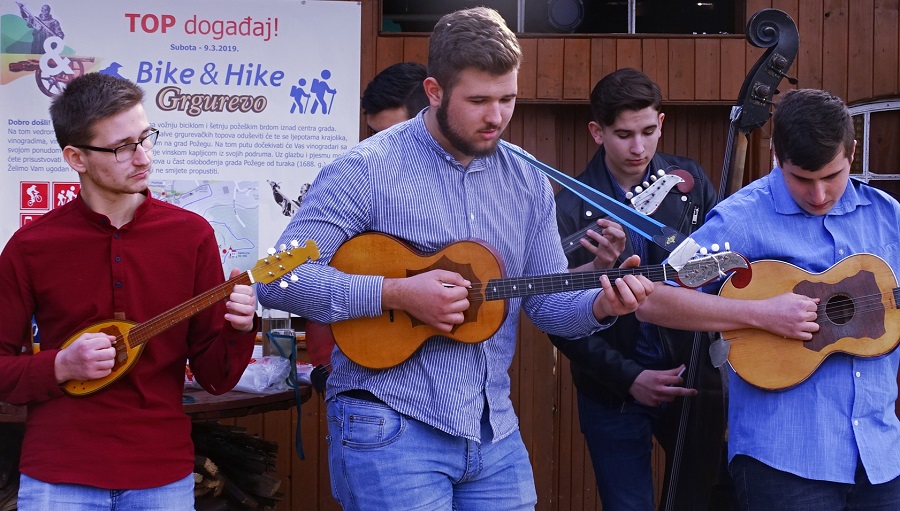
The entry ticket for this event was a glass in a convenient canvas wrap which cost just 25 kuna and included the food, wine and music at three locations. The next site was the Sajfert wine-house. There, in addition to the wine and brandy, we also tasted the traditional dish called gojtani with jam. It is an old-fashioned dish preserved thanks to the "Museum in the Pot" project implemented by the Požega Town Museum since 2012, developed by ethnologist and museum director Maja Žebčević Matić. The three essential ingredients needed to make the gojtani are flour, milk and eggs, prepared by frying them in the lard, and you will need a funnel as well. It is a particular dish of Cvelferija, the southernmost part of Vukovar-Srijem County, brought there in the 18th century by immigrants from the German-speaking countries.

After tasting the gojtani, I pour the house wine, and the boss, Sajfert, leads me to the terrace of the wine house which features beautiful views. He offers me his own “kulenova seka” sausage, which is really great. And it has to be, given that he used to work as a food technologist for the Papuk meat industry in Požega, after being educated in Petrinja where the practical part of the courses was done together with the Gavrilović meat industry. We discuss the tourist potential of the Požega area, and I jokingly tell him that it is somewhat selfish from him that he is keeping these views just for himself and that he did not open the accommodation facilities in the house. He explains that it is not impossible something similar might happen in the future, and the participation in this event is actually the first step toward that. He also tells me that his cousin is successful in tourism, through the Zlatni Lug complex, which includes a restaurant, a bed and breakfast, and a campsite.
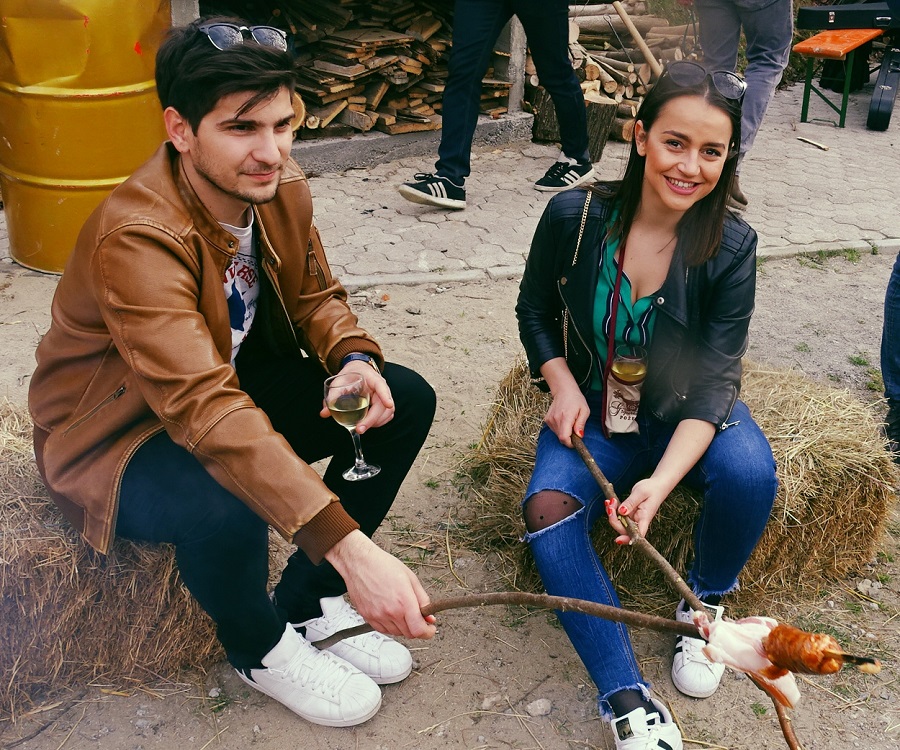
The third venue is the Vukušić wine house. There, the visitors are obliged to make a very difficult decision. They can either choose to grill their own bacon and sausage on a stick over the open fire, or they can just eat the ones made beforehand by the hosts. Of course, the tamburitza band and the wines in large quantities were also there.
We chose to walk along this route, but there were many cyclists and even horse riders who joined us. Cannon shots could be heard from the hills, probably so that the Ottomans would not come back and spoil the party. Who knows, if they had a more liberal attitude towards wine, they might have stayed longer in these parts.
More news about Slavonia can be found in the Lifestyle section.
Grgurevo Bike & Hike Coming to Požega on March 9
The old baroque town of Požega is located in the heart of Slavonia, at an altitude of 152 metres. For the last three centuries, the people of Požega have marked the anniversary of the historic date of March 12, 1688, when f. Luka Ibrišimović freed Požega from 150 years of Turkish occupation. On that day, guns and old mortars can be heard on the Sokolovac hill marking the famous battle of Sokolovac, while the town’s streets are full of historical units and town guard units from all over Croatia and abroad, with festivities continuing on the surrounding hills with a few glasses of good Požega wines. Savour the tastes of Požega with the wines and the Požega Grgurevo delicacies, and mark the battle anniversary yourselves.
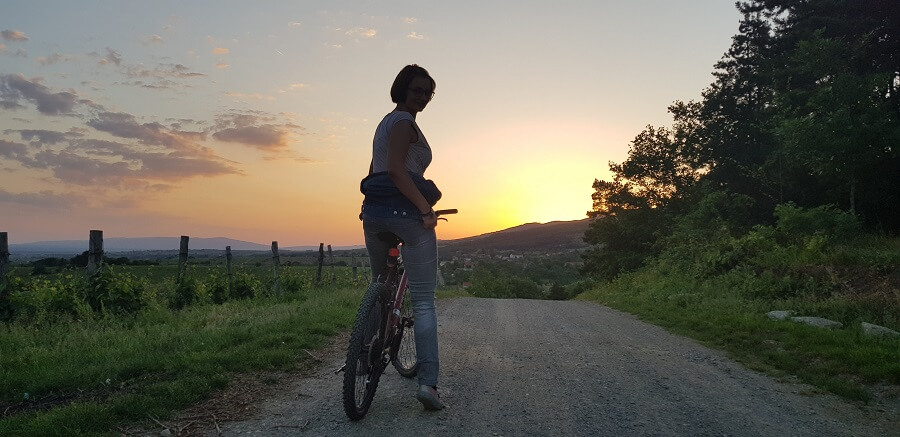
The exciting event is organised by the Luks Bike Adventure tourist agency specialising in incoming bike & wine tours. The agency has been founded and is managed by Igor Marač, who has also been overseeing the eponymous bike service shop in Požega, and who was active in sports cycling for a number of years. At the headquarters at Stjepan Radić St. in Požega, in addition to bicycles and cyclo-touristic brochures, you can also find local products from the Požega region, such as the Bridges Brewery craft beer, the Josipović sparkling wine, and homemade and handmade Luks Kuki cookies which they prepare themselves. This is an excellent starting point for getting acquainted with Požega and the Golden Valley.
Schedule
09:00-14: 00 Handicraft fair, Promenade Zone
10:00-11:30 Town tour with professional guidance
10:00-12:00 Medieval carriage ride
11:30 Review of historical troops, St. Theresa Square
11:45 "The Legend of f. Luka" play, St. Theresa Square
12:00 Hiking in Požega Hills
14:00-15:00 Riding in Požega Hills
15:00 Shooting with historical troops, in front of St. Vitus church
12:00 - START OF TOP EVENT
– a visit to the Požega vineyards, from the direction of St. Vitus Street or Holy Ghost Street (medium difficulty, 3.6 km, about an hour and a half)
– a visit of the three vineyard houses at Požega Hill
– vineyard house of the Jurković family (from 12:00)
– Čobanac strew tasting
– house wine tasting
– fruit brandy tasting
– photos next to f. Luka Ibrišimović
– festive gathering accompanied by Slavonian tamburitza music
– vineyard house of the Sajfert family (from 12:00)
– “Gojtana” with marmalade tasting
– house wine tasting
– fruit brandy tasting
– photos of the vineyard panorama and Požega in the Grgurevo frame
– shooting from the Grgurevo cannon (until 16:00)
– festive gathering accompanied by Slavonian tamburitza music
– vineyard house of the Vukušić family (from 12:00)
– tasting of Slavonian sausage and the grilled bacon
– house wine tasting
– fruit brandy tasting
– shooting from the Grgurevo cannon (until 16:00)
– festive gathering accompanied by Slavonian tamburitza music
– parlour games
– hiking in the vineyards (medium difficulty, 3.6 km, about an hour and a half)
– the possibility of bicycle riding
– 18:00 return to the Holy Trinity Square
TOP EVENT includes
– outdoor tastings; the Požega Grgurevo menu, tour of the three vineyard houses
– Slavonian tamburitza music
– tasting of Požega wines
– tasting of Požega brandies
Price of tasting: 25,00 kuna, glass with a case, including tastings of Slavonian delicacies and Požega wines in three vineyard houses on the Požega Hill
More news about Požega can be found in the Lifestyle section.






